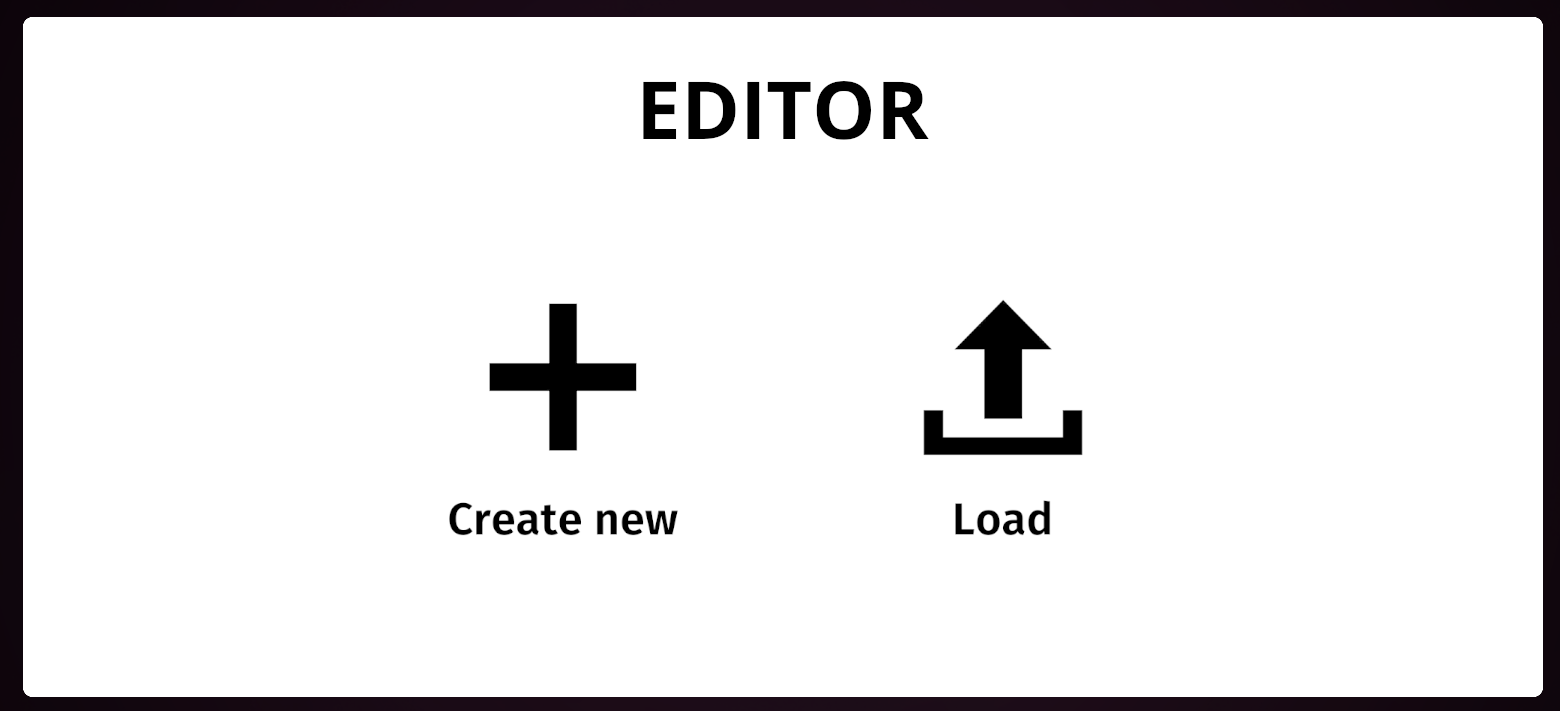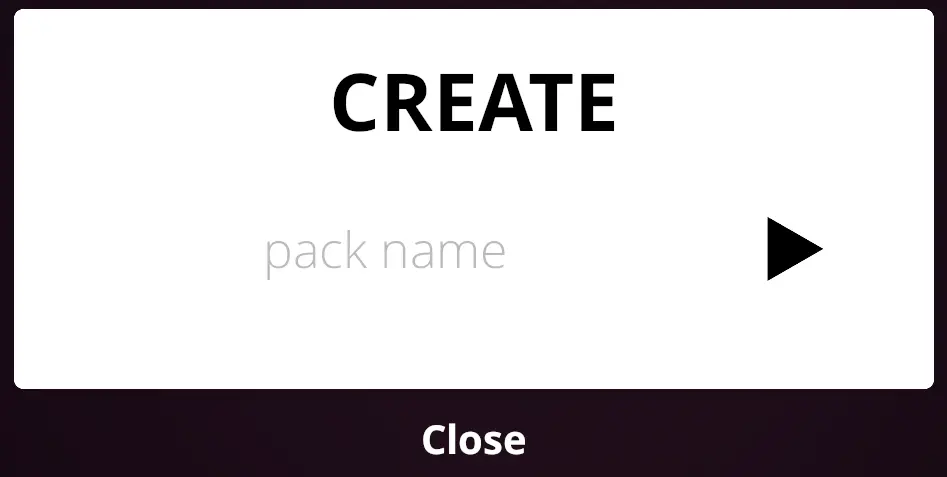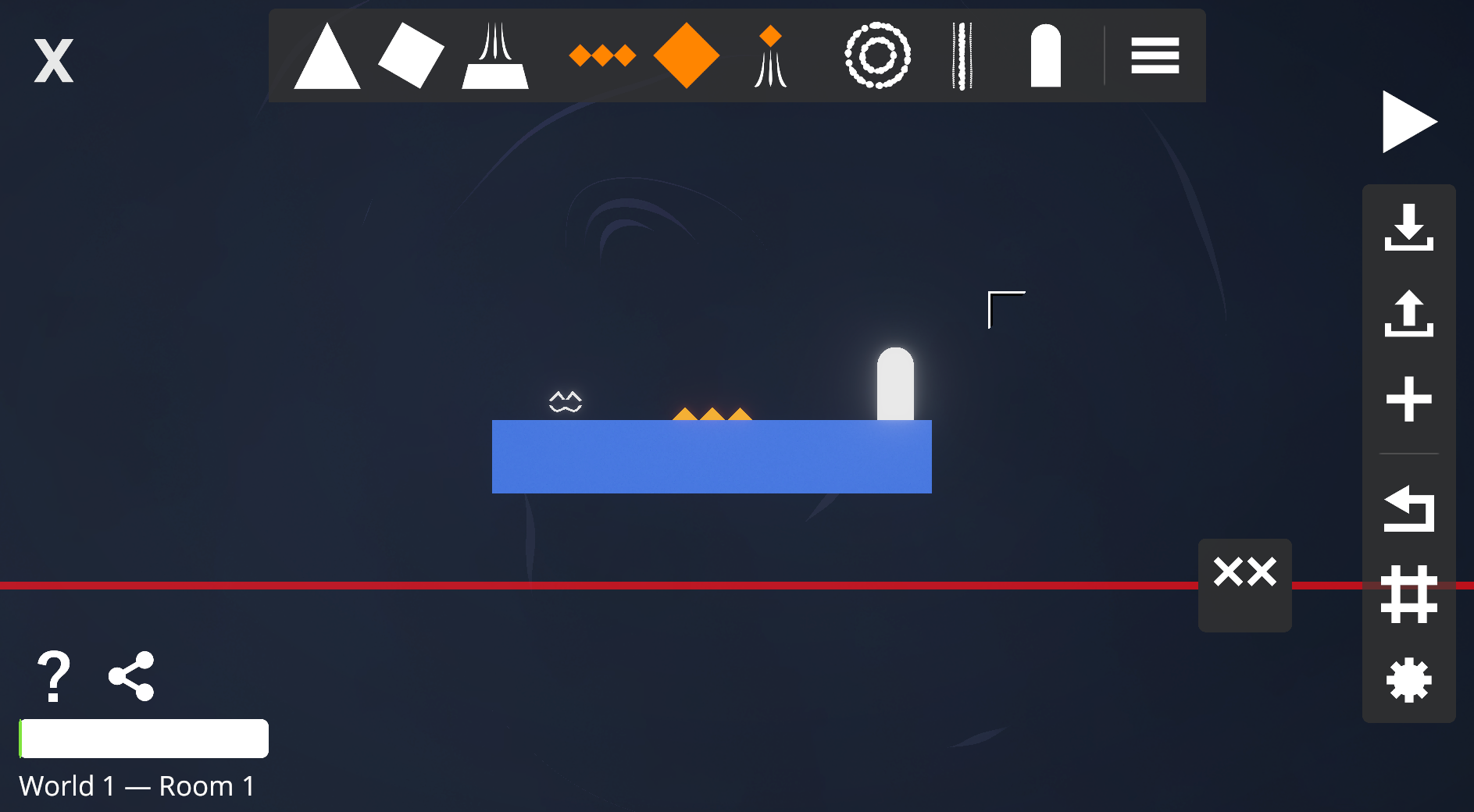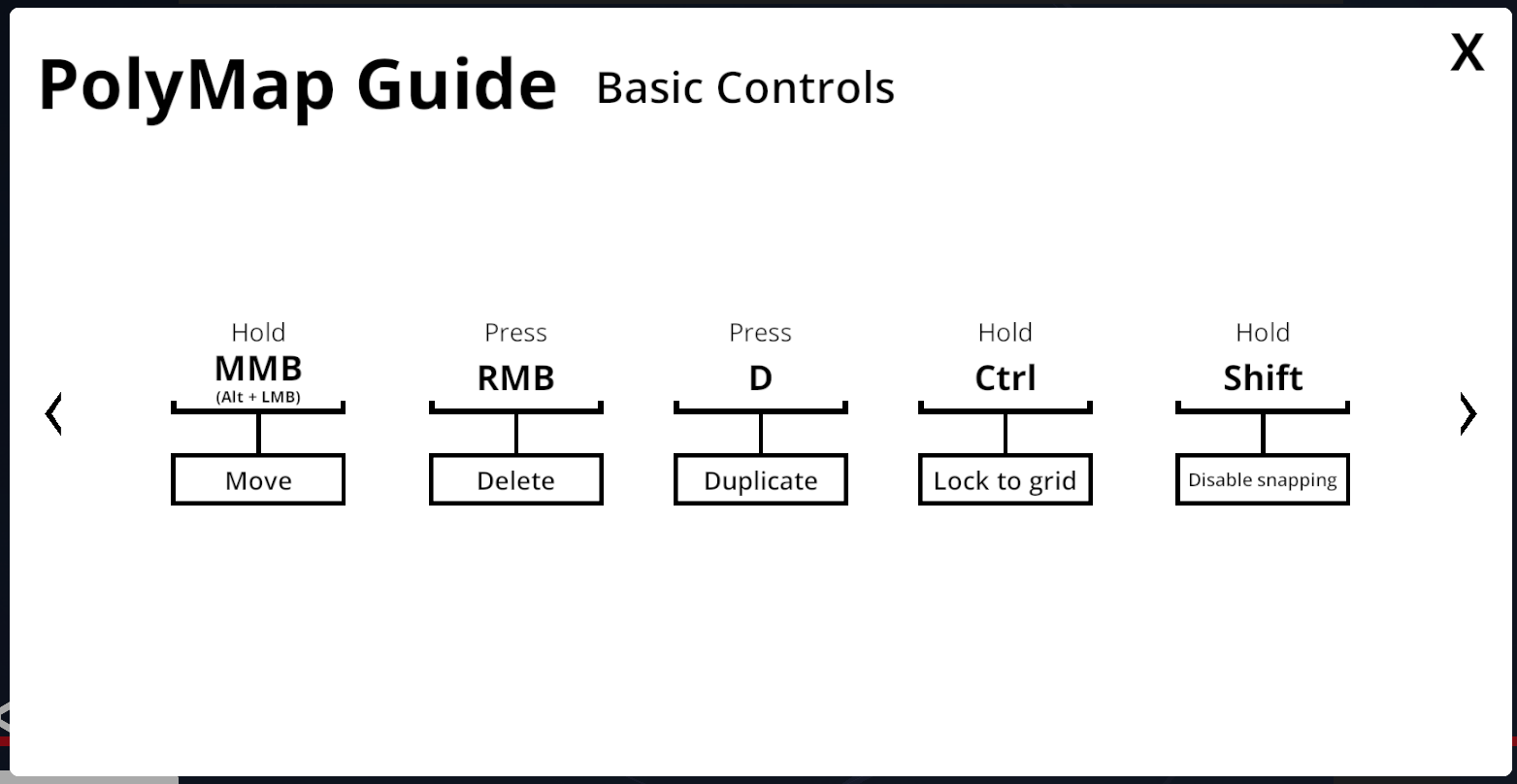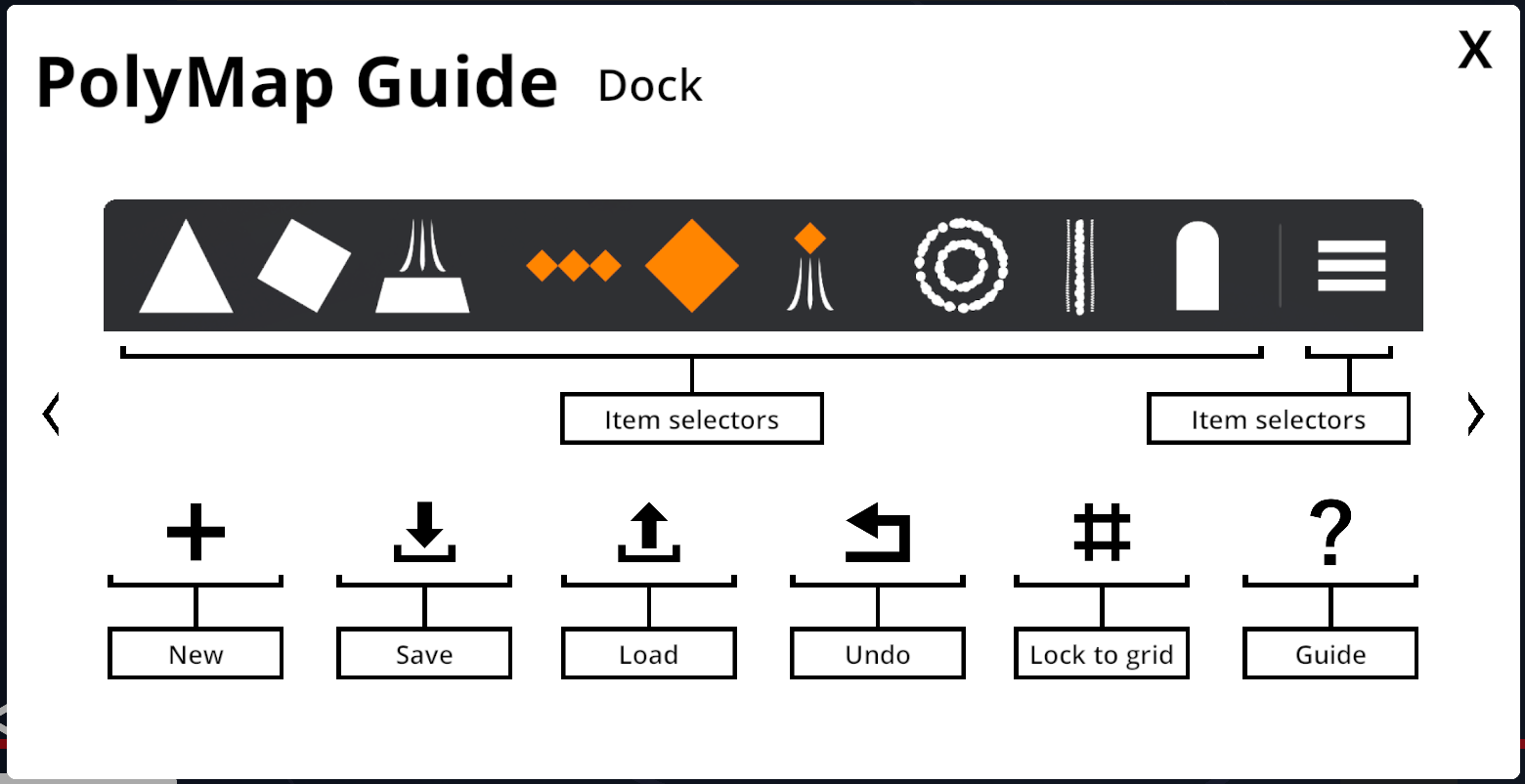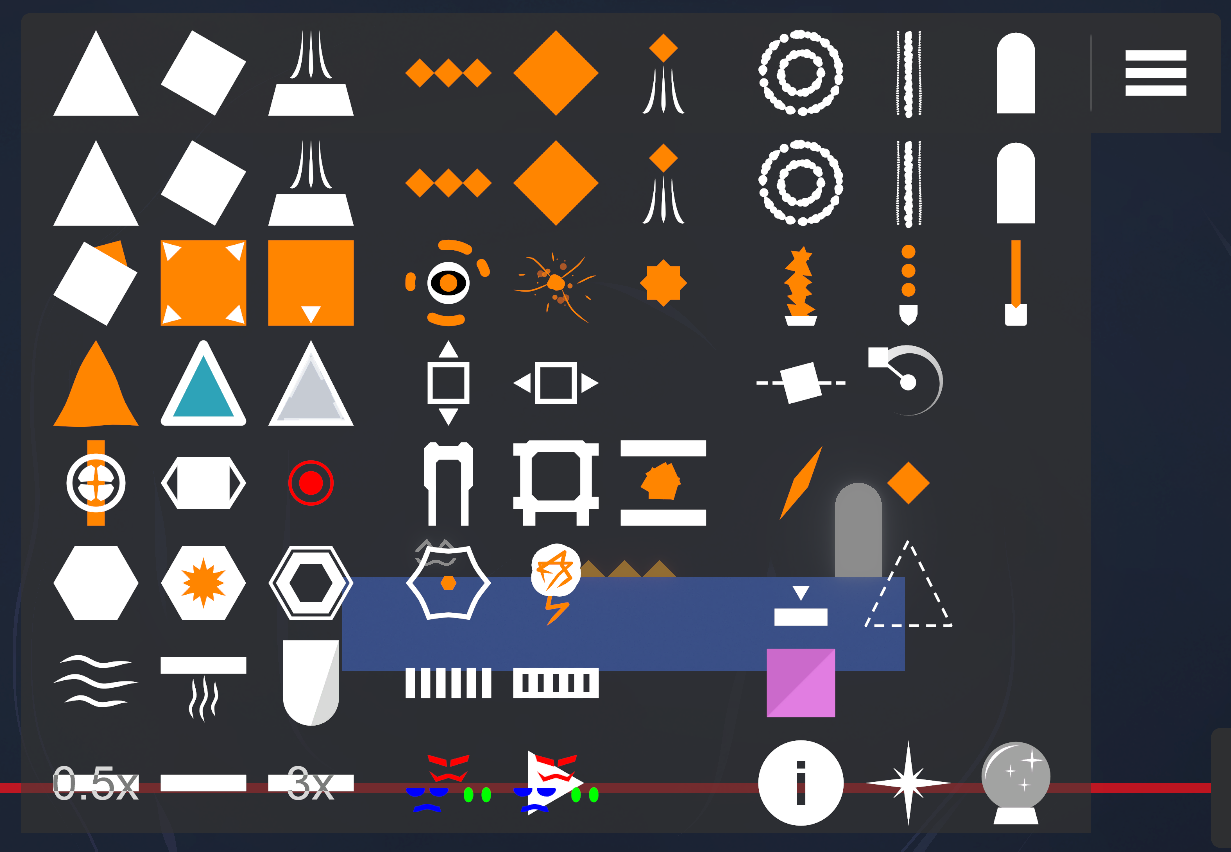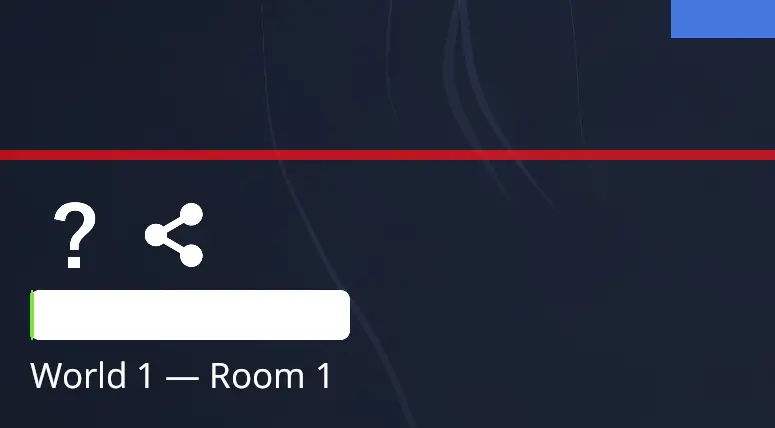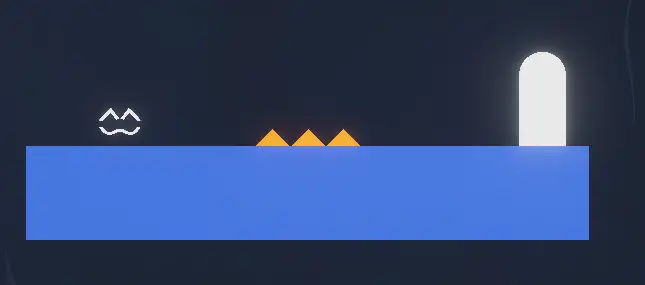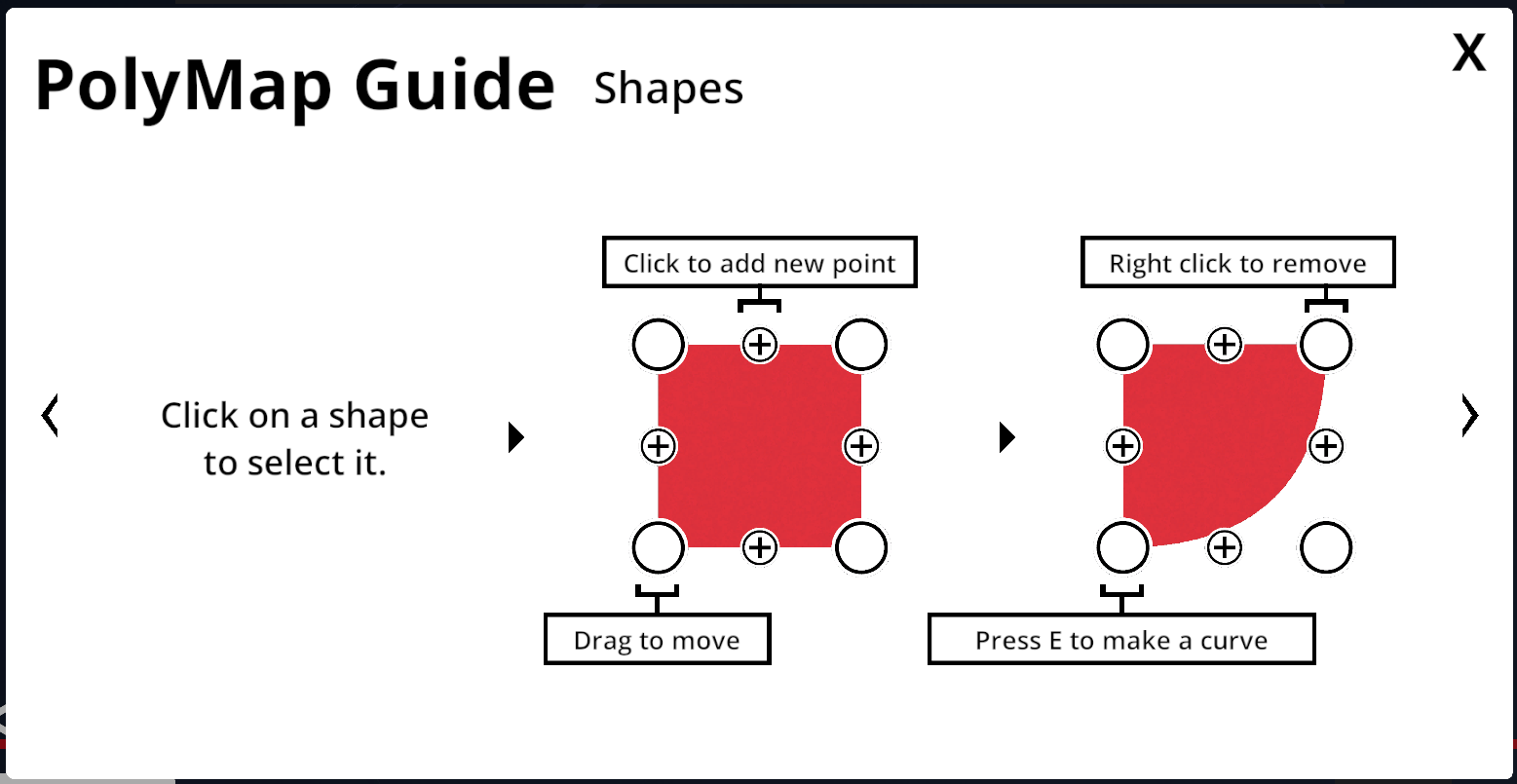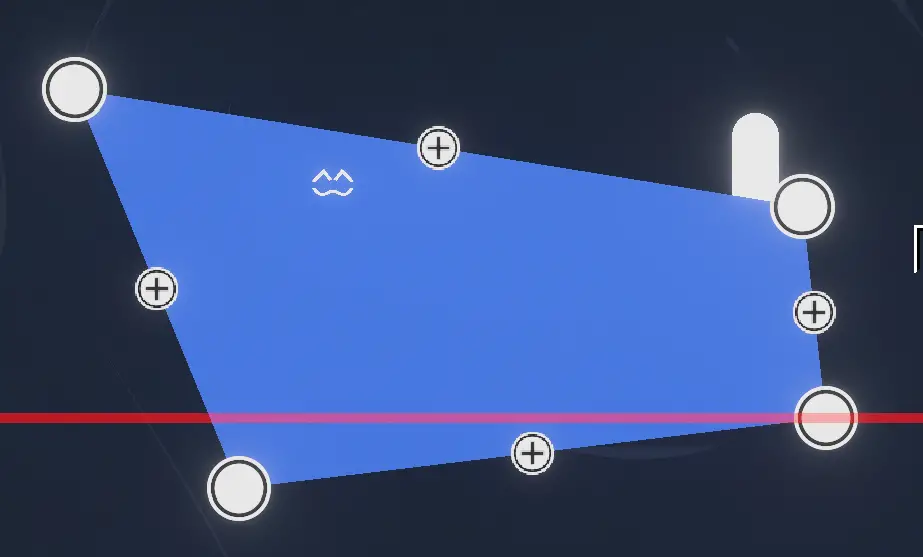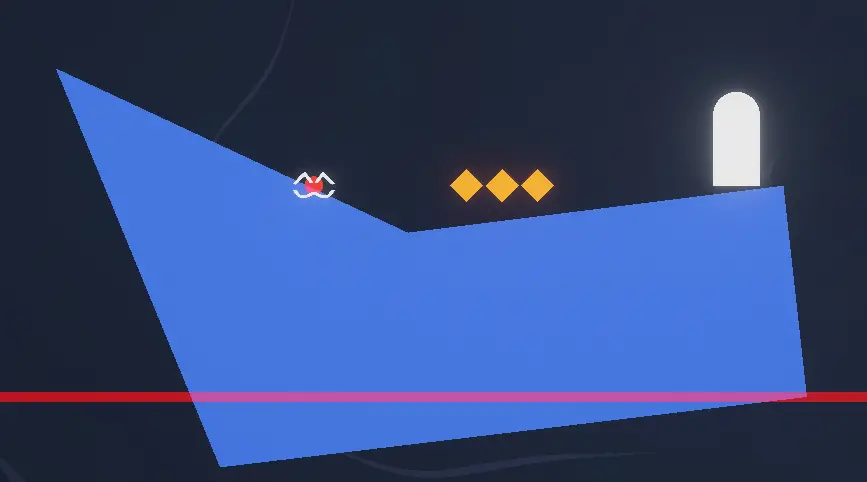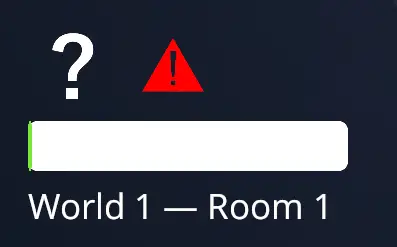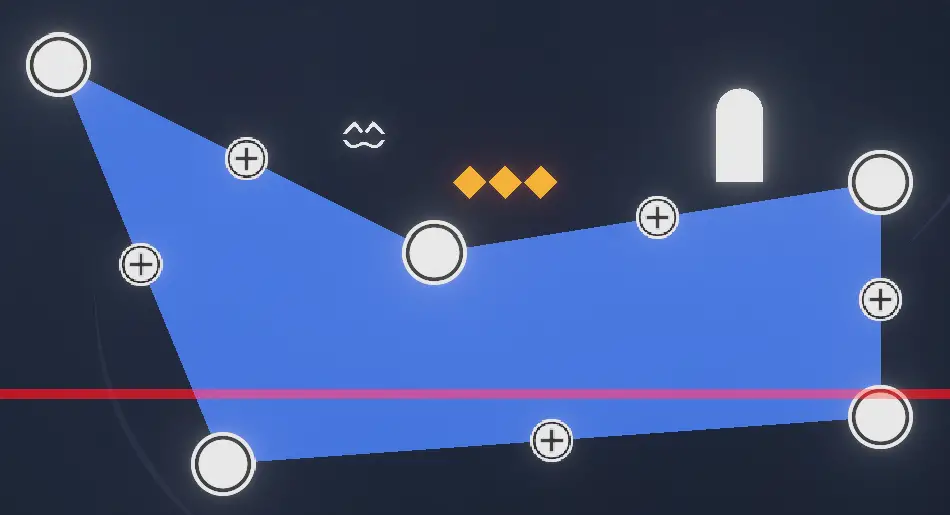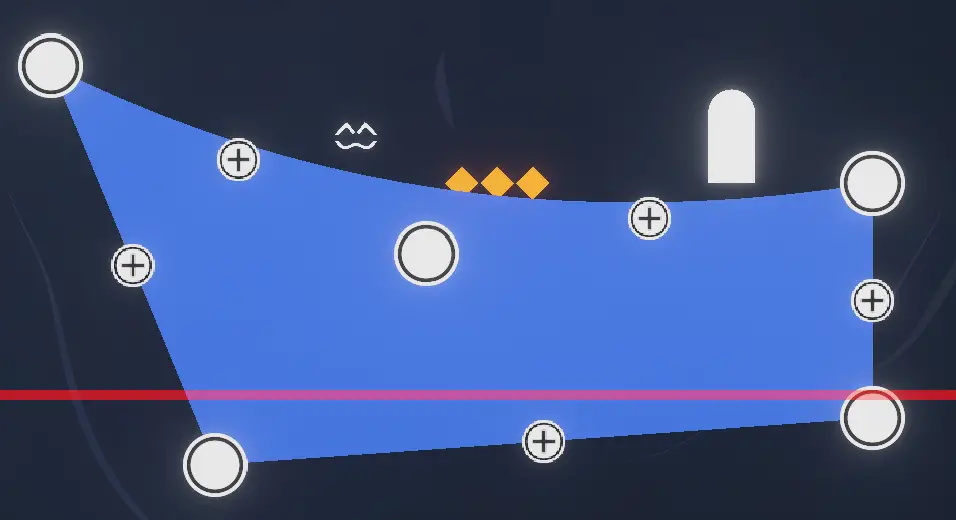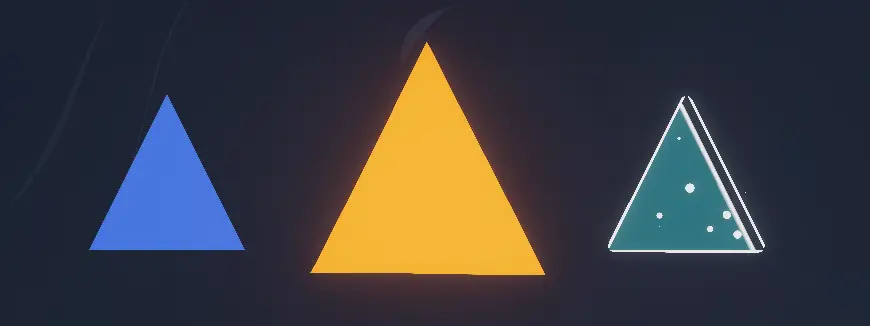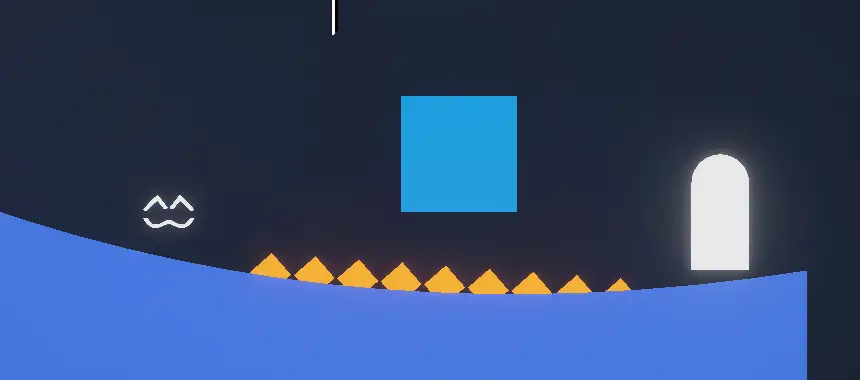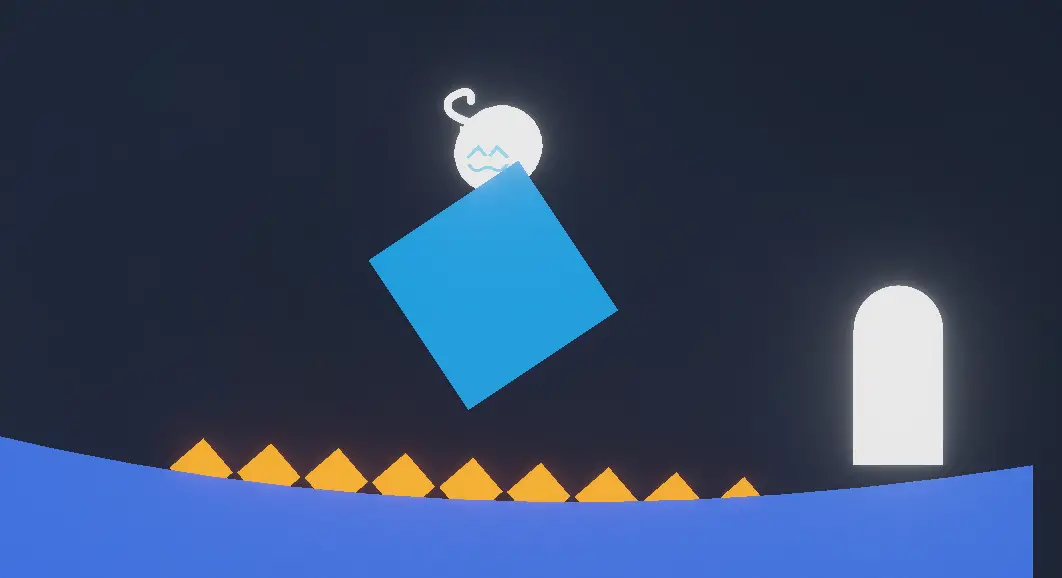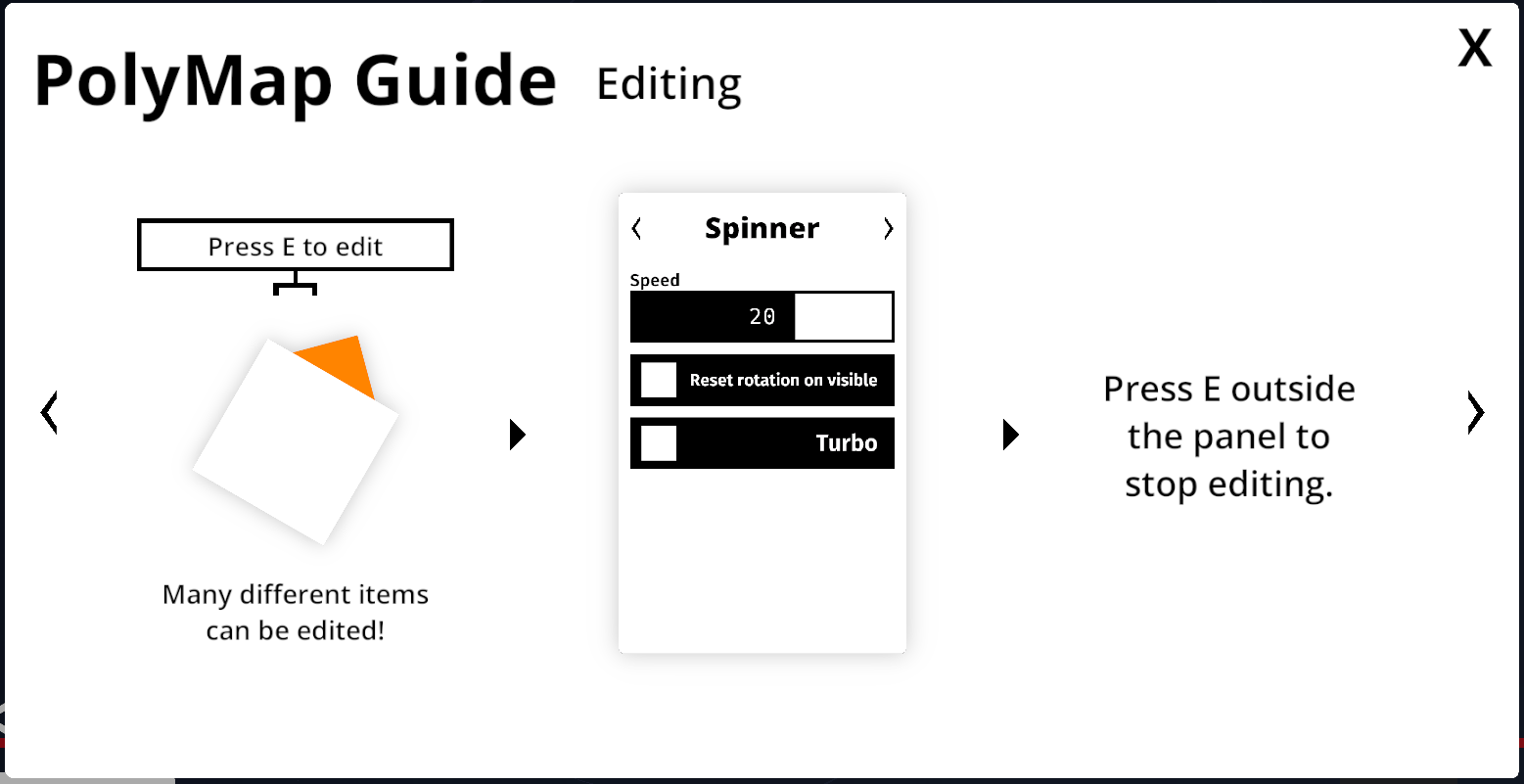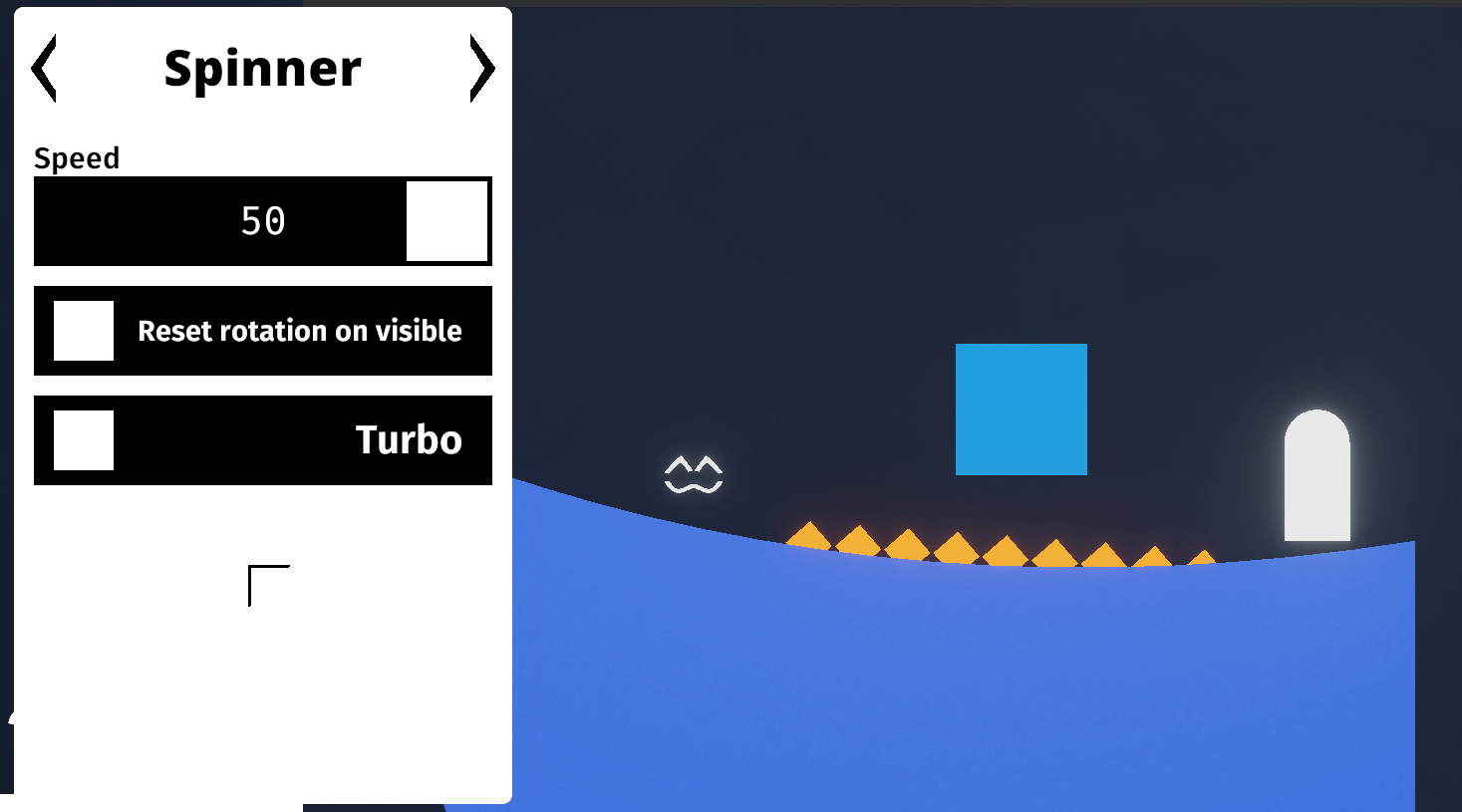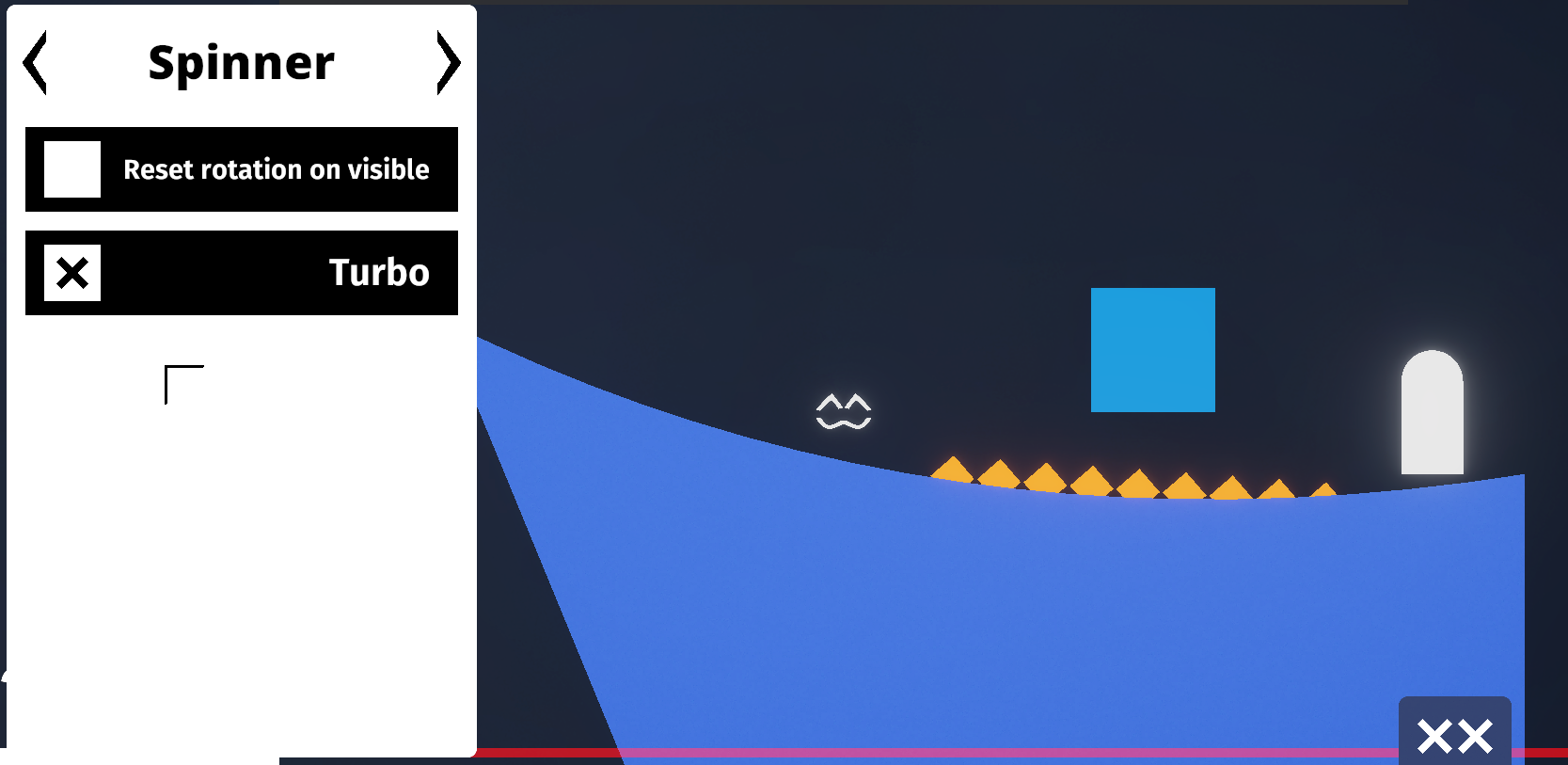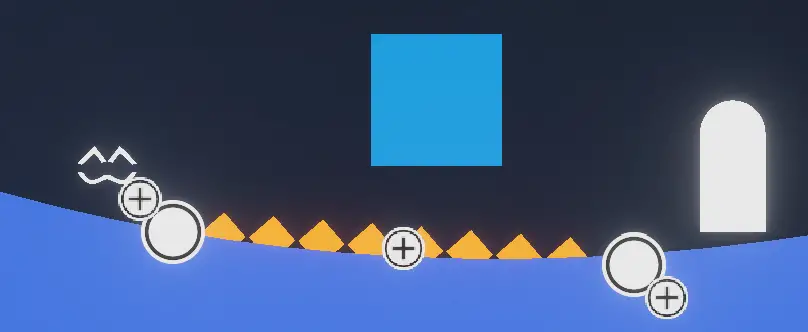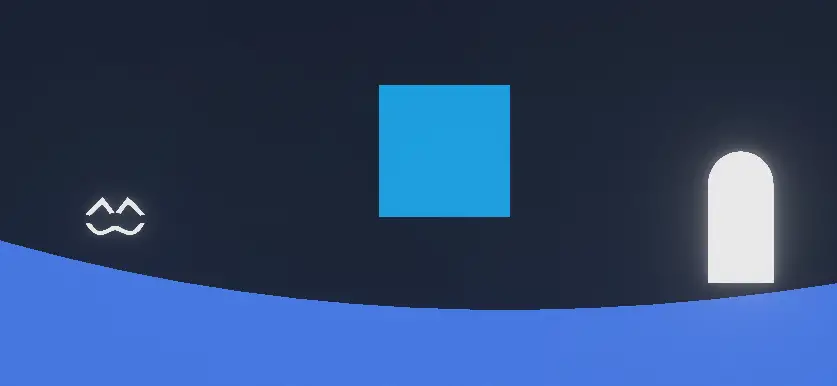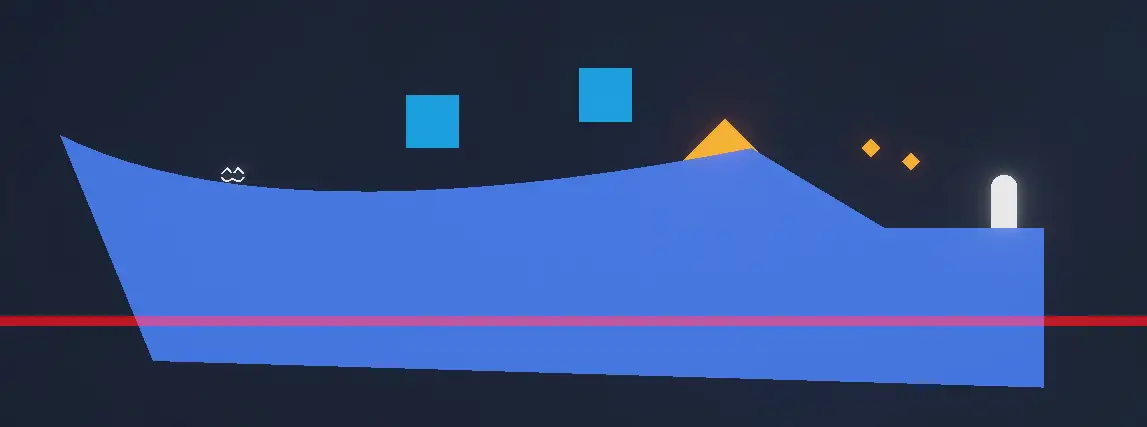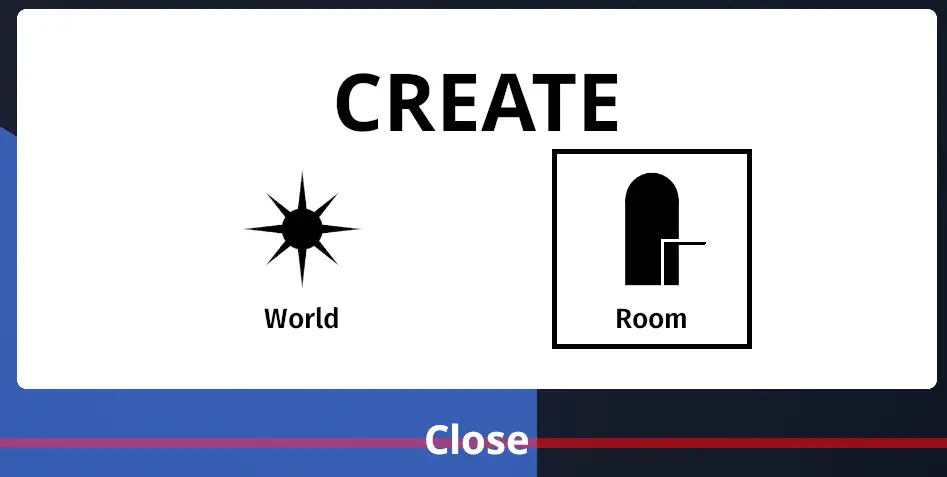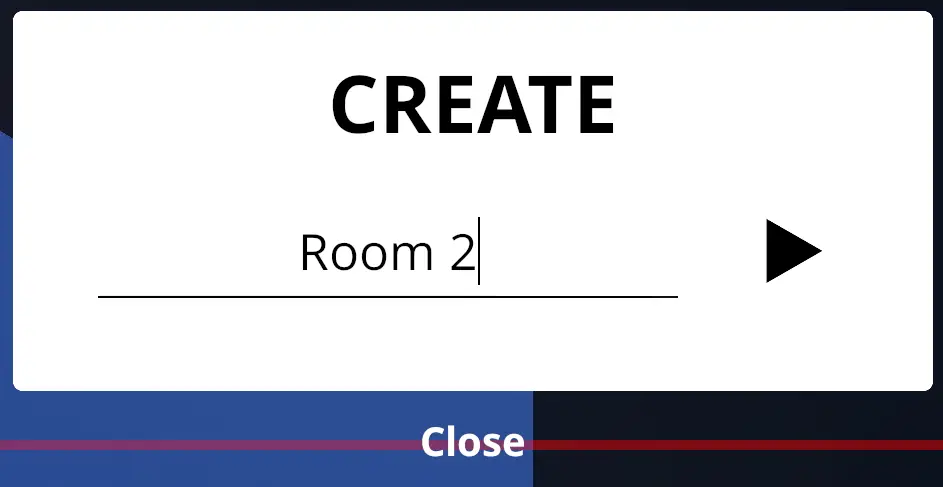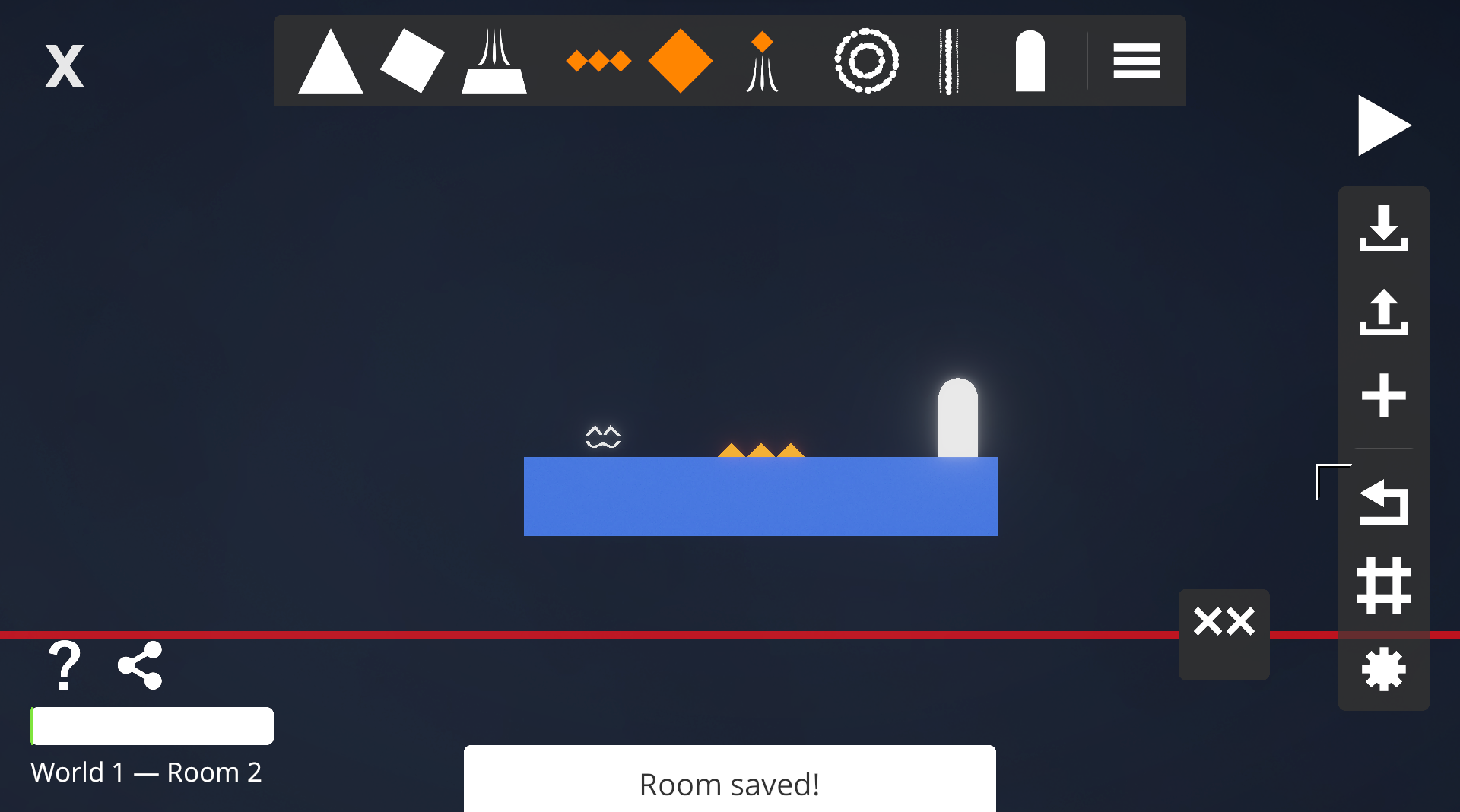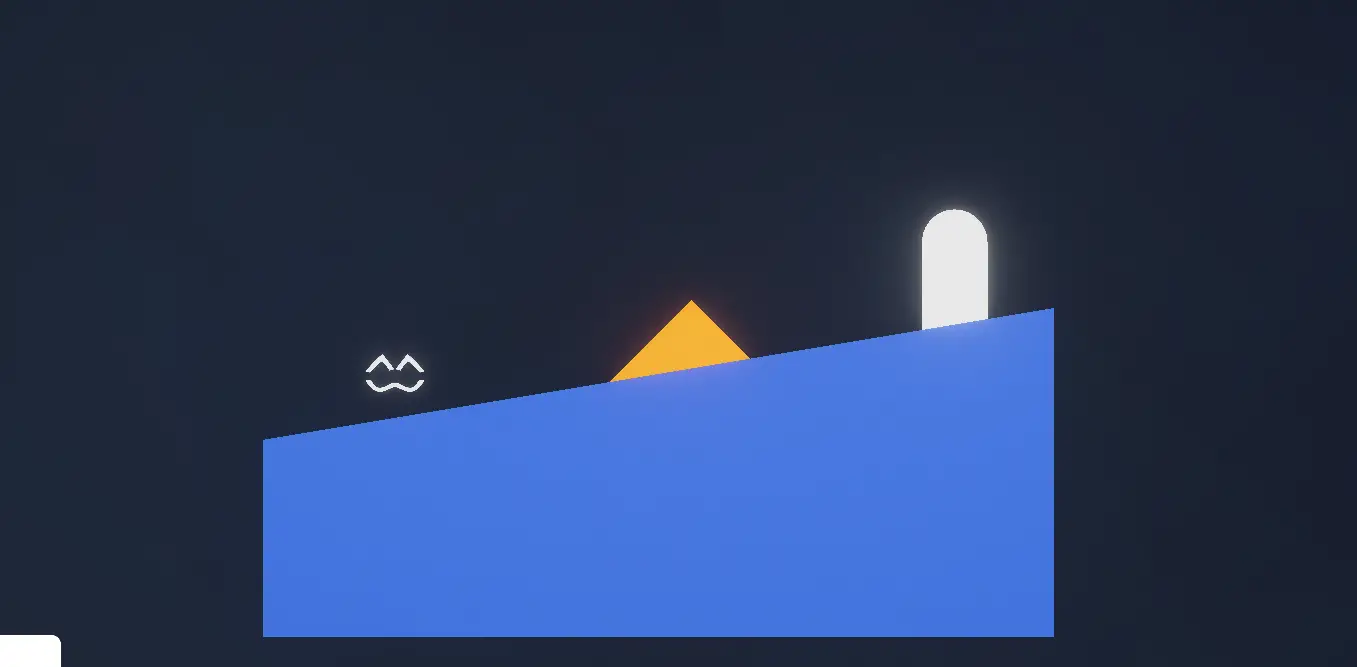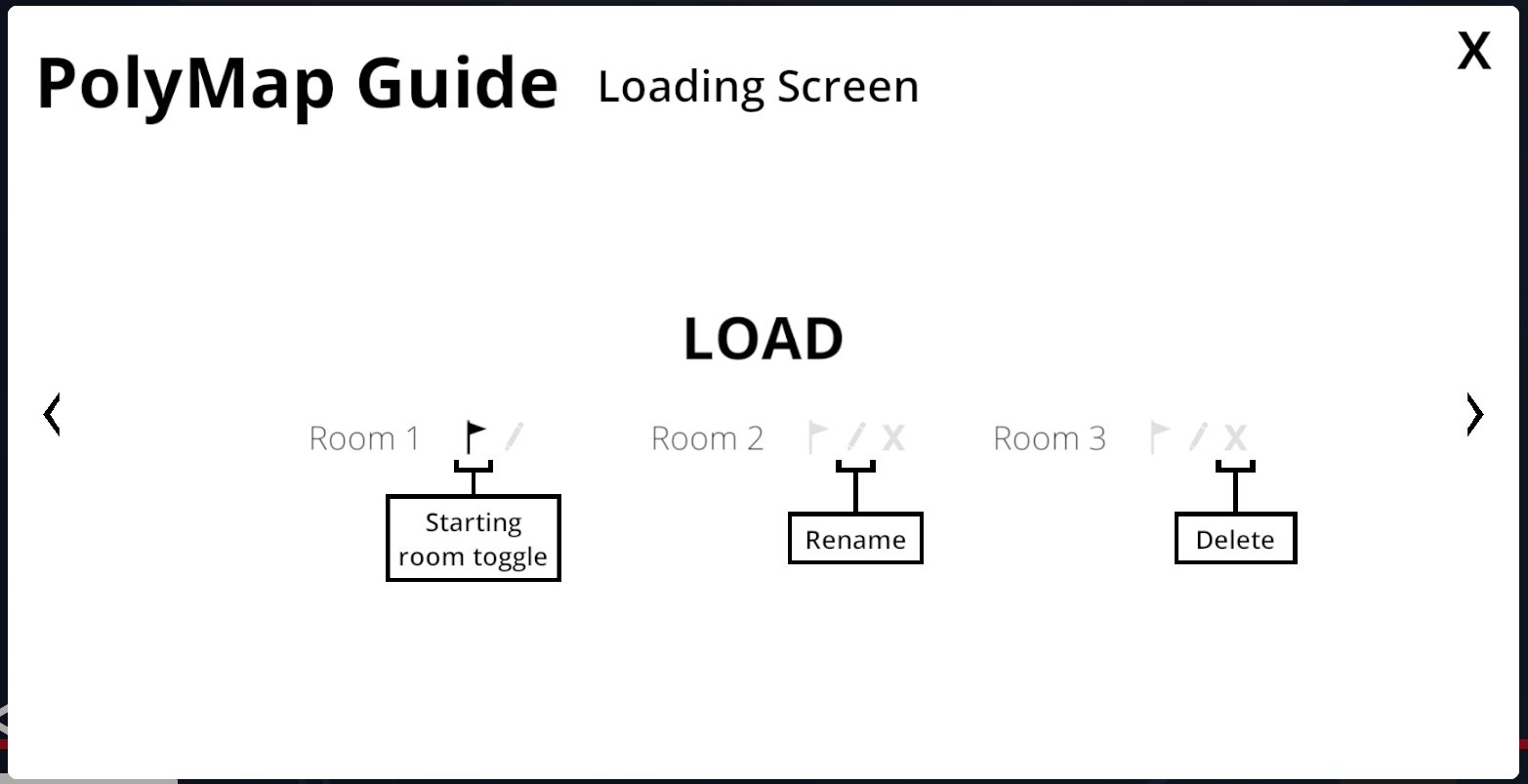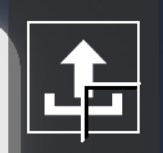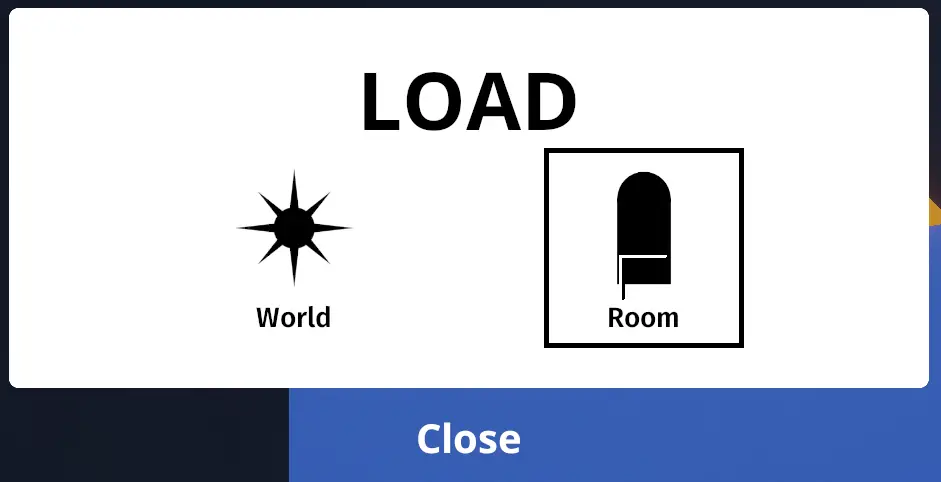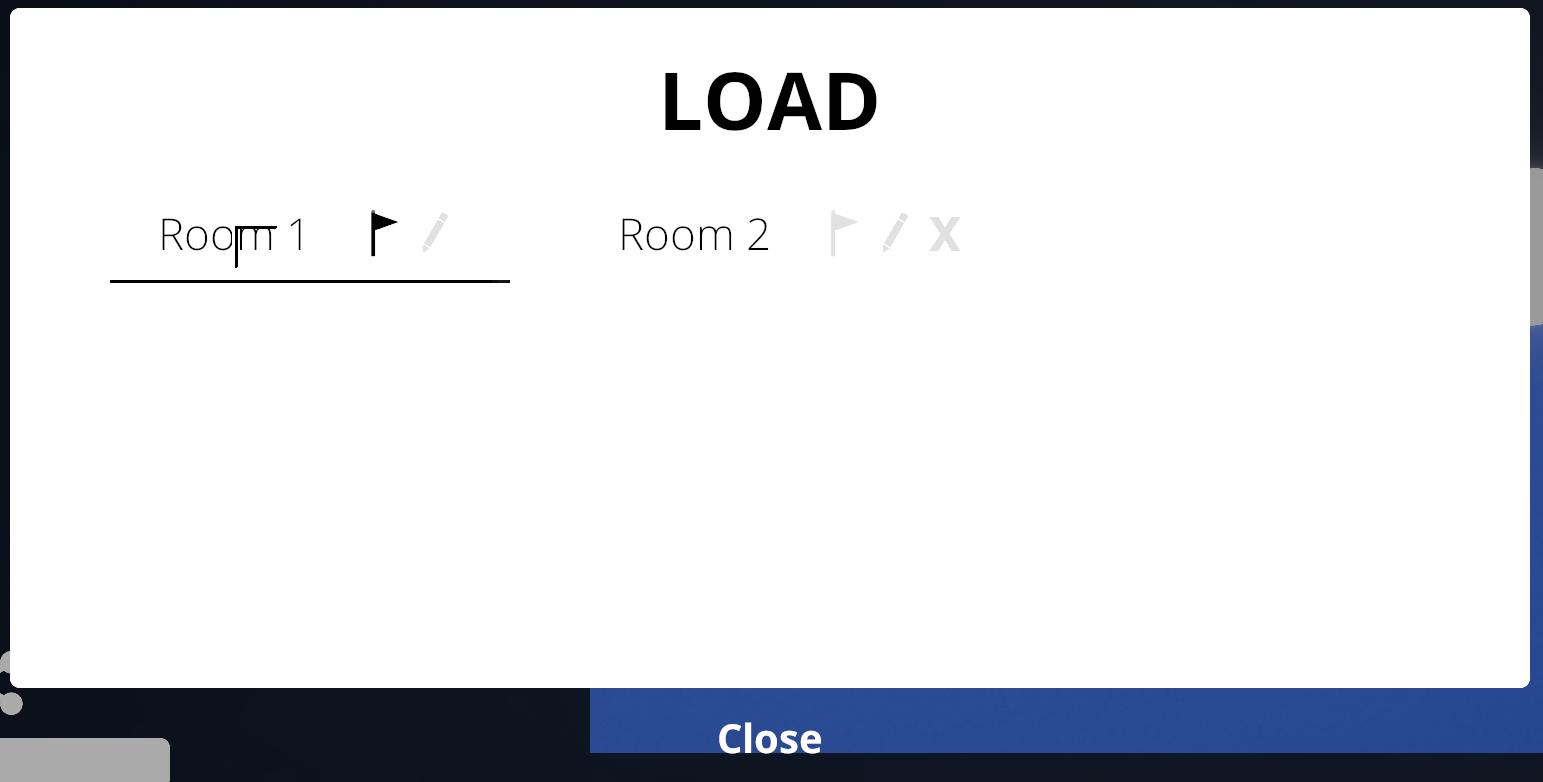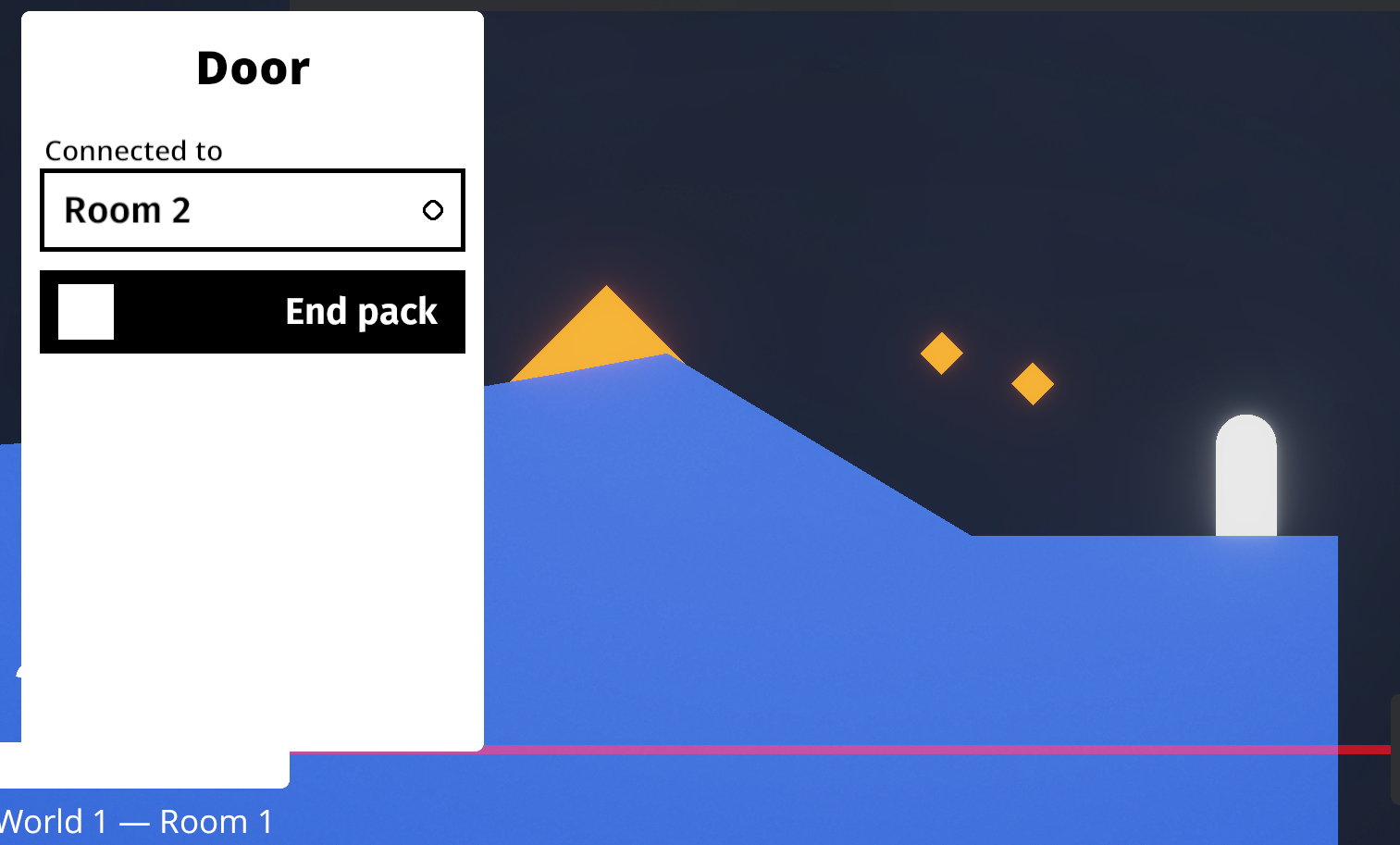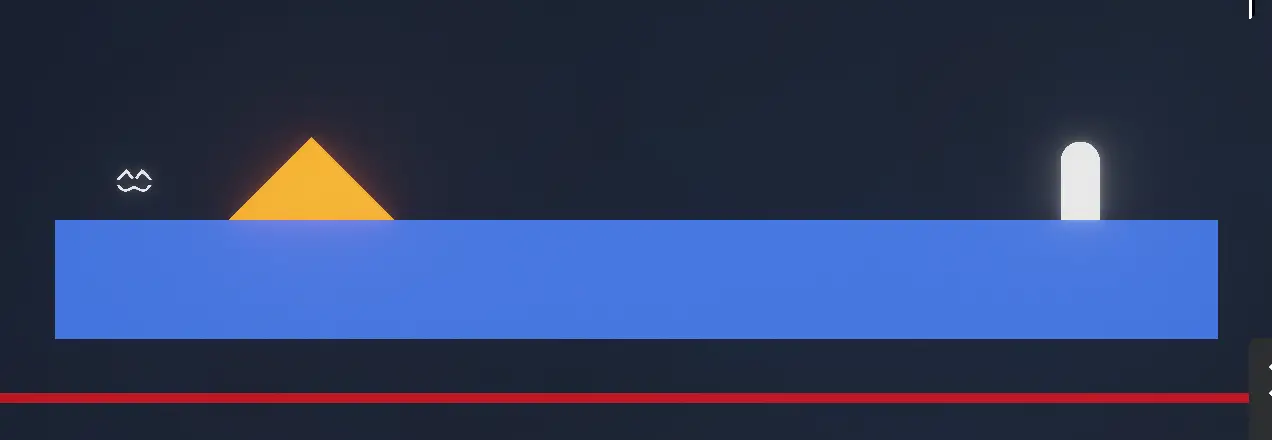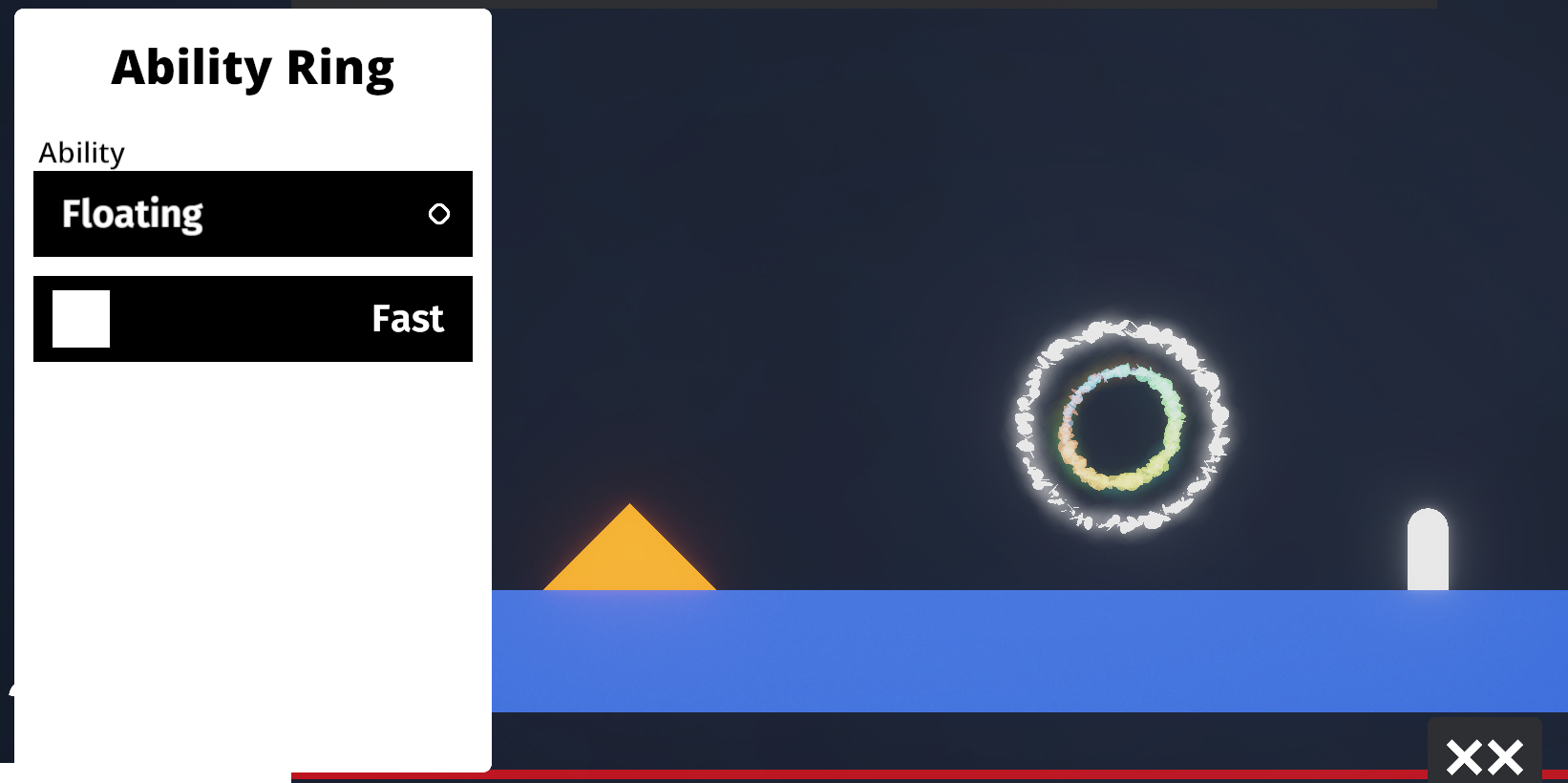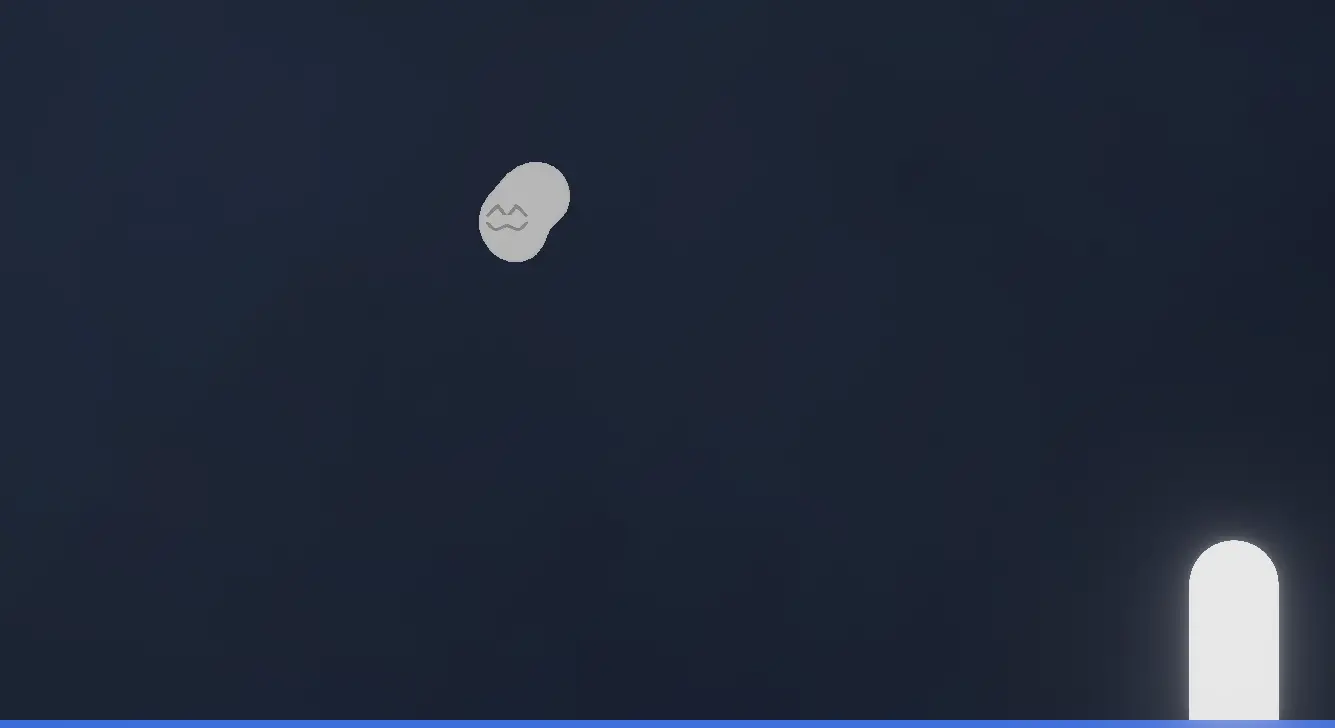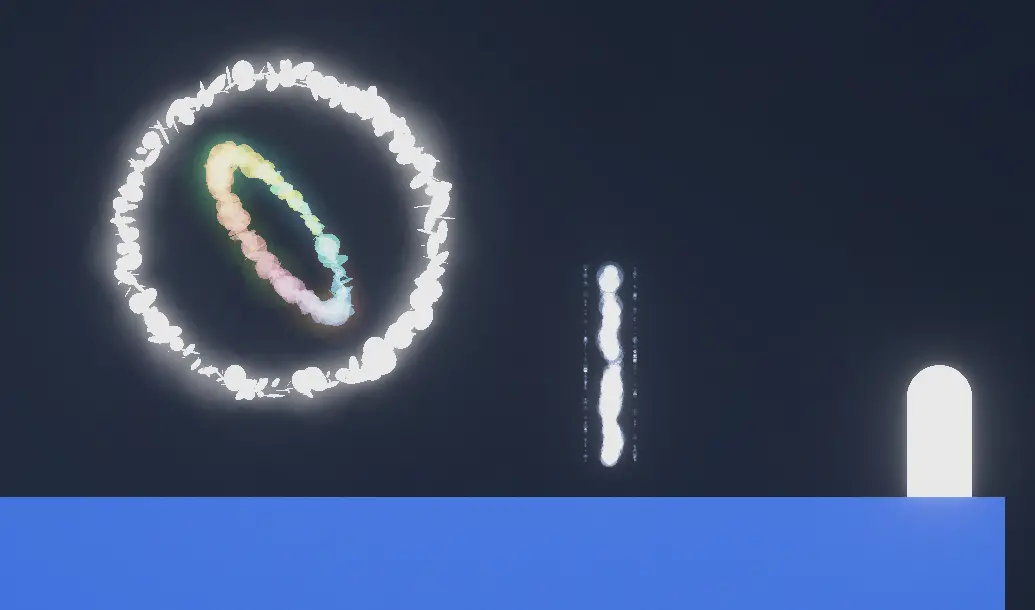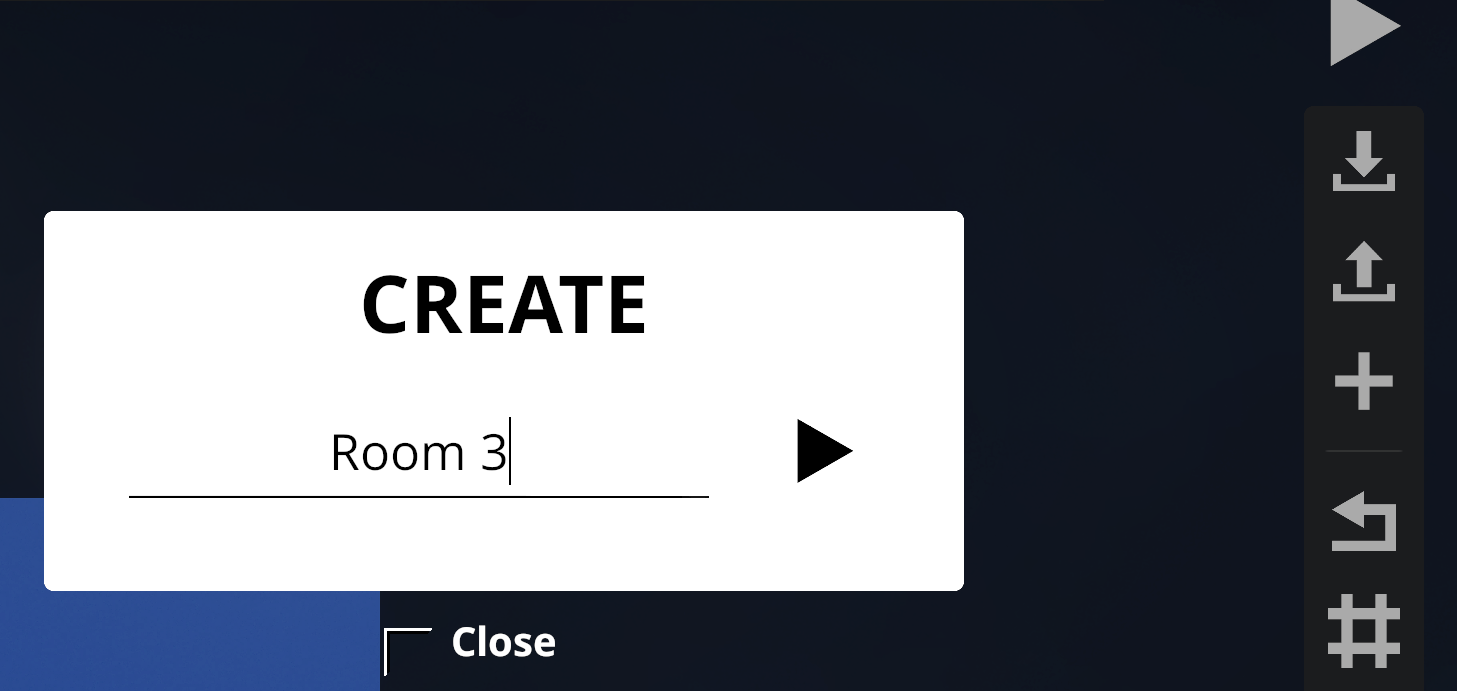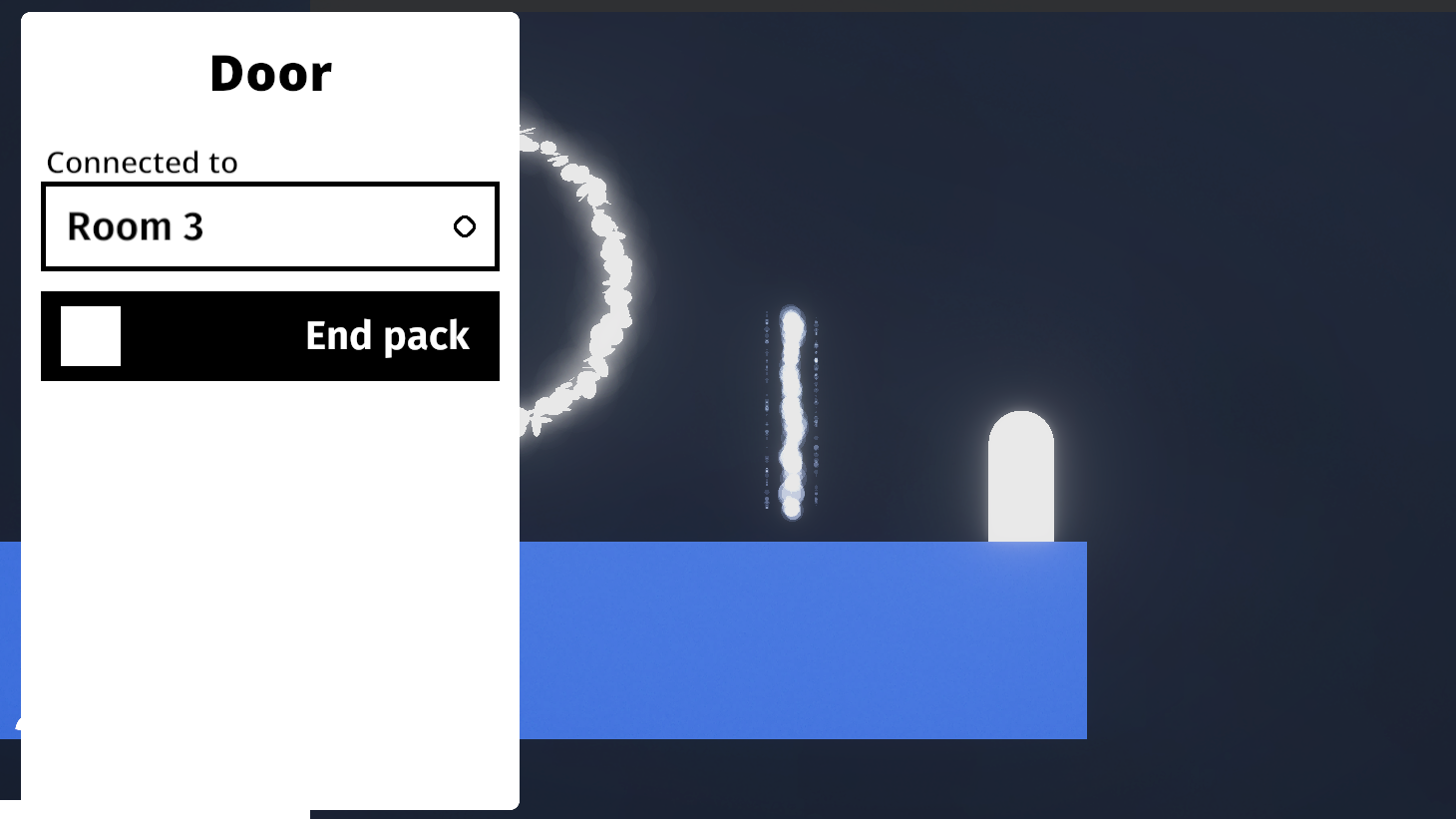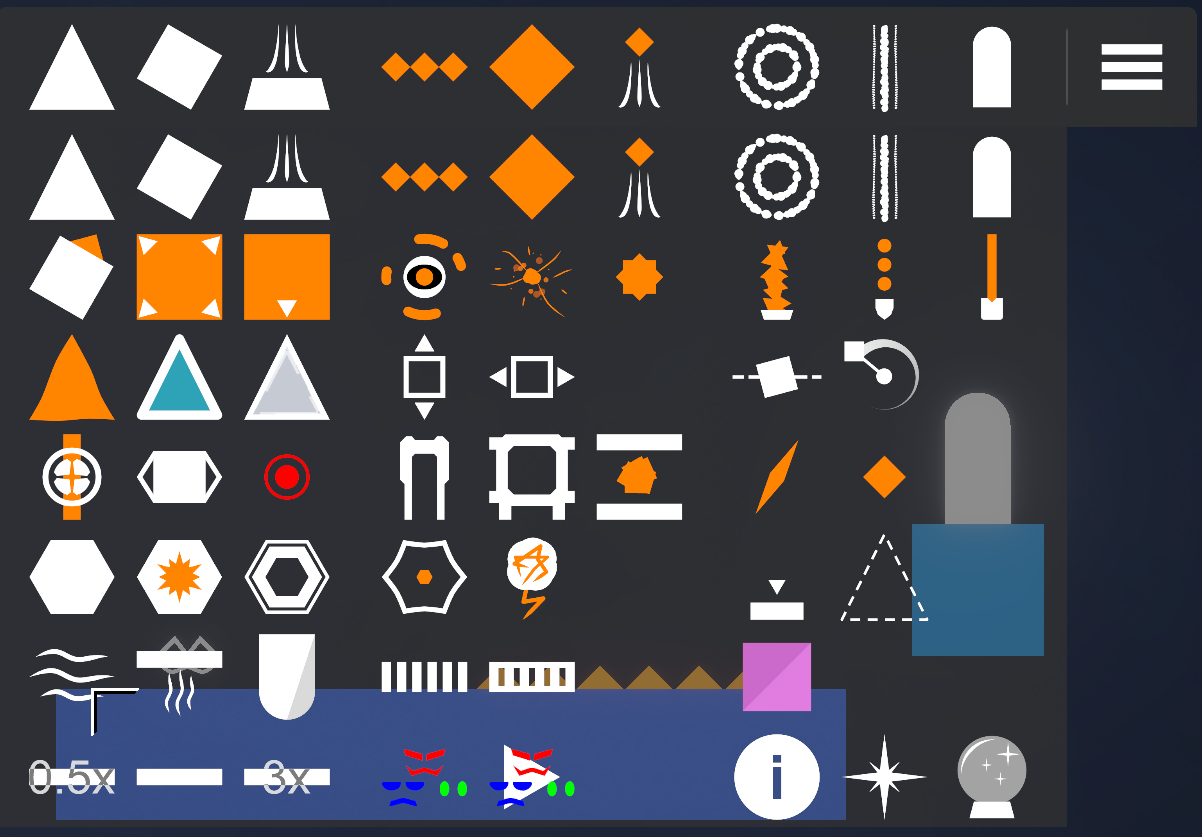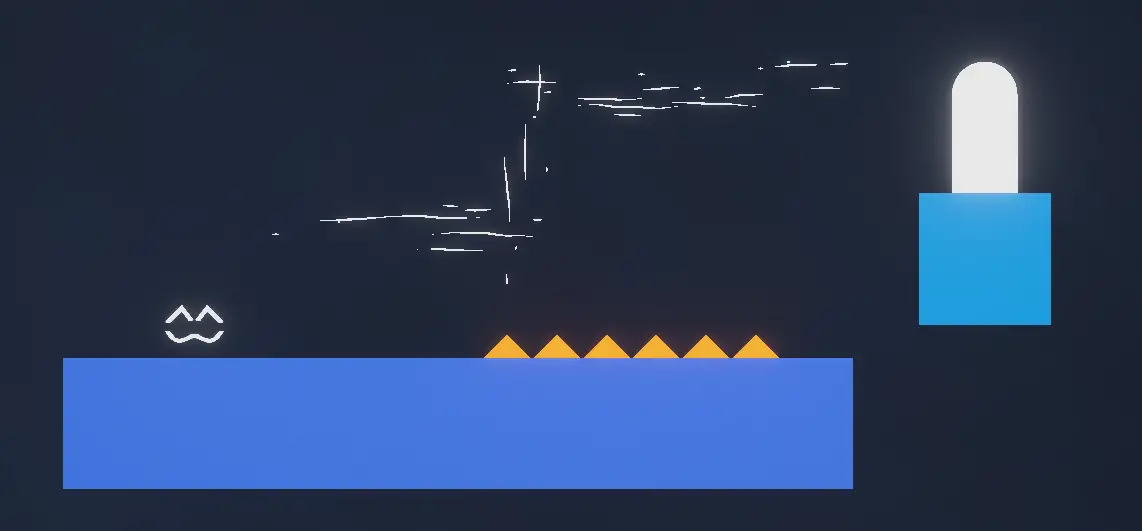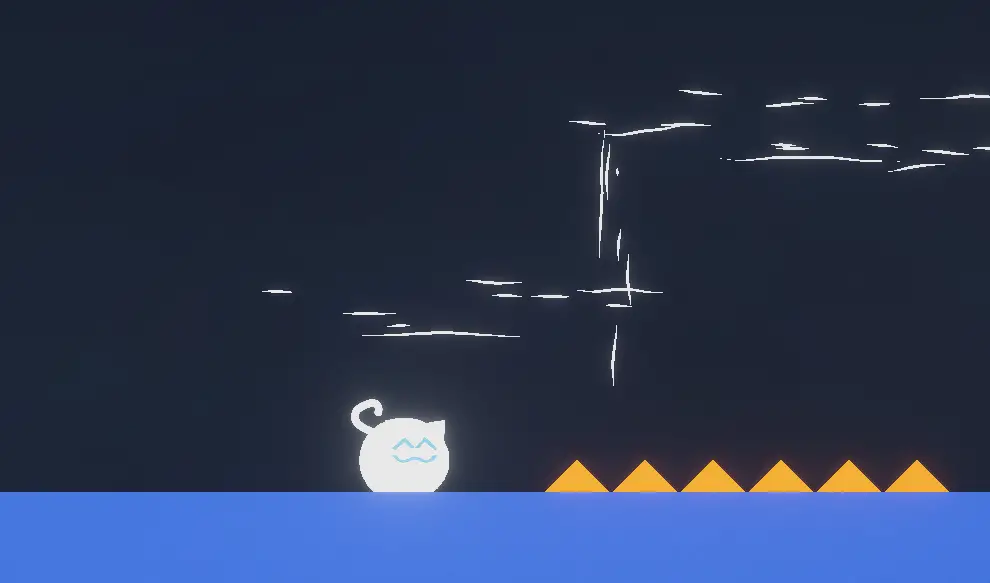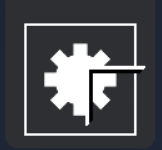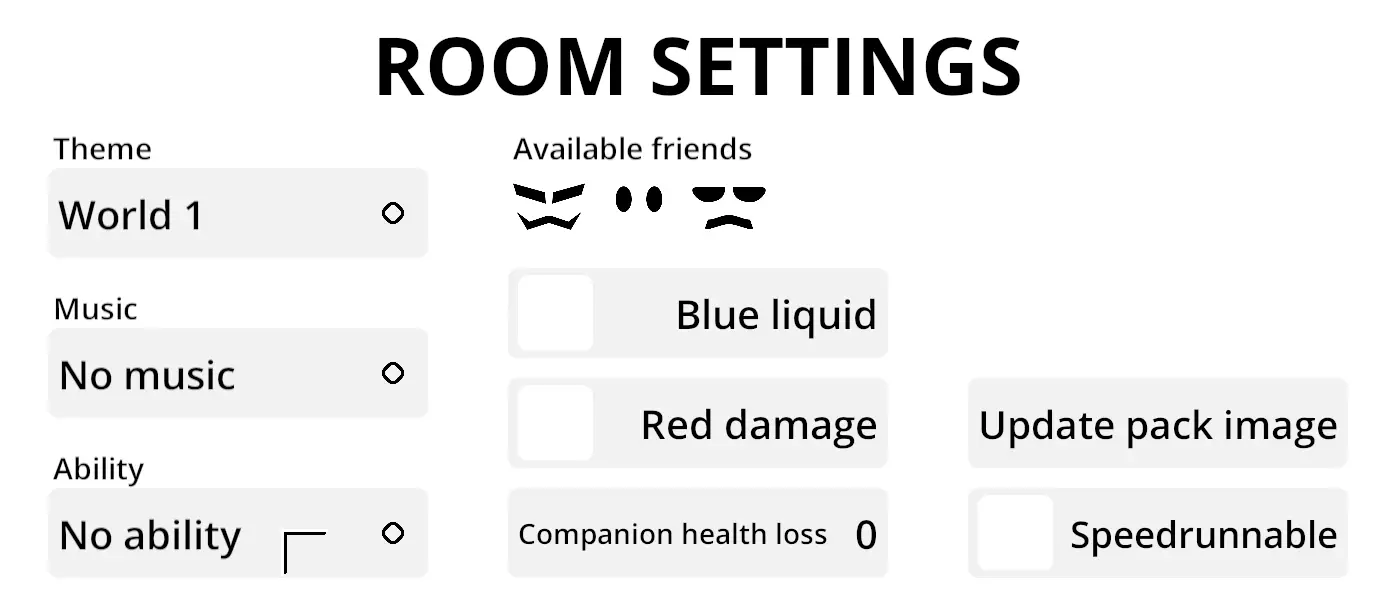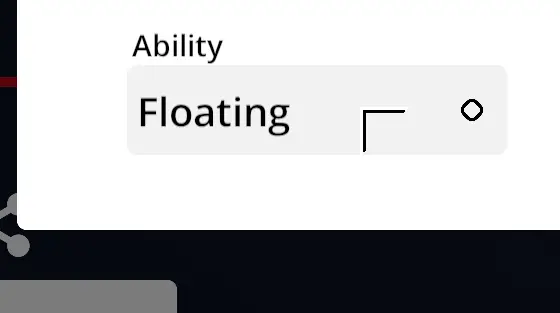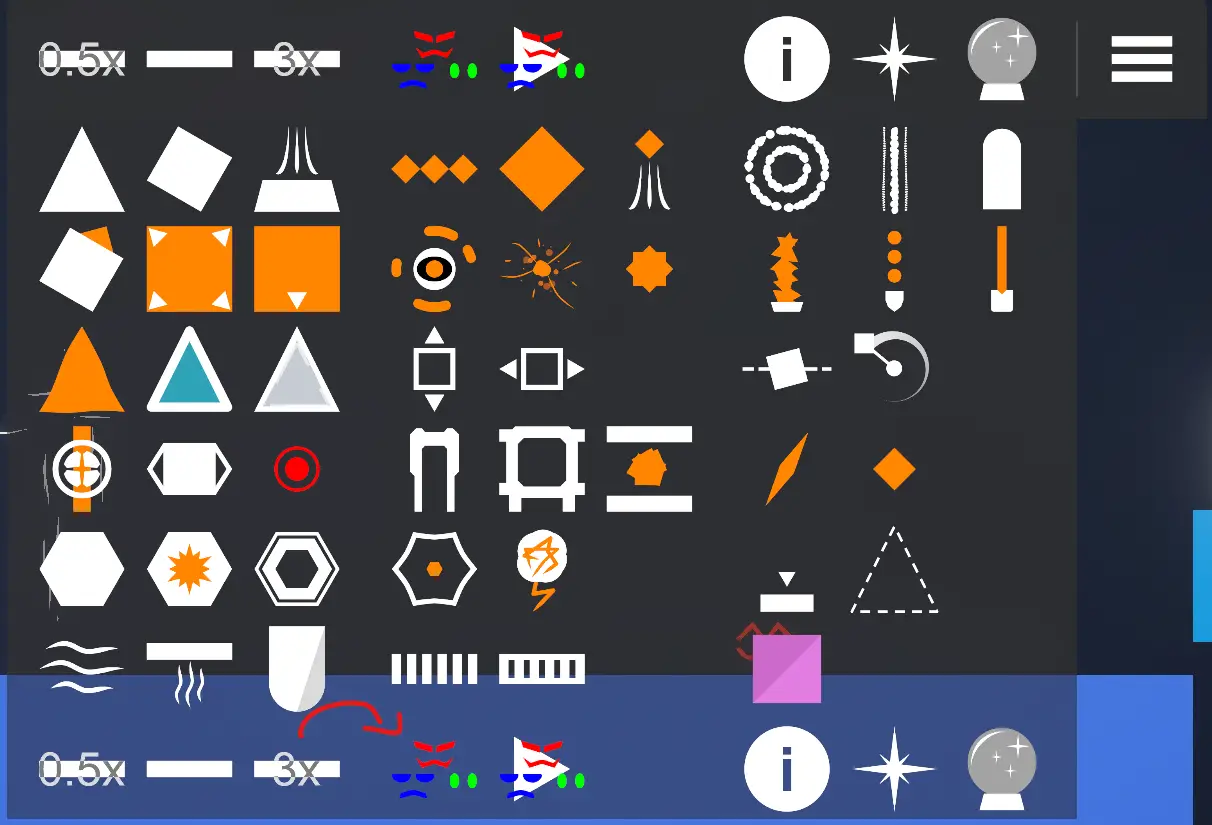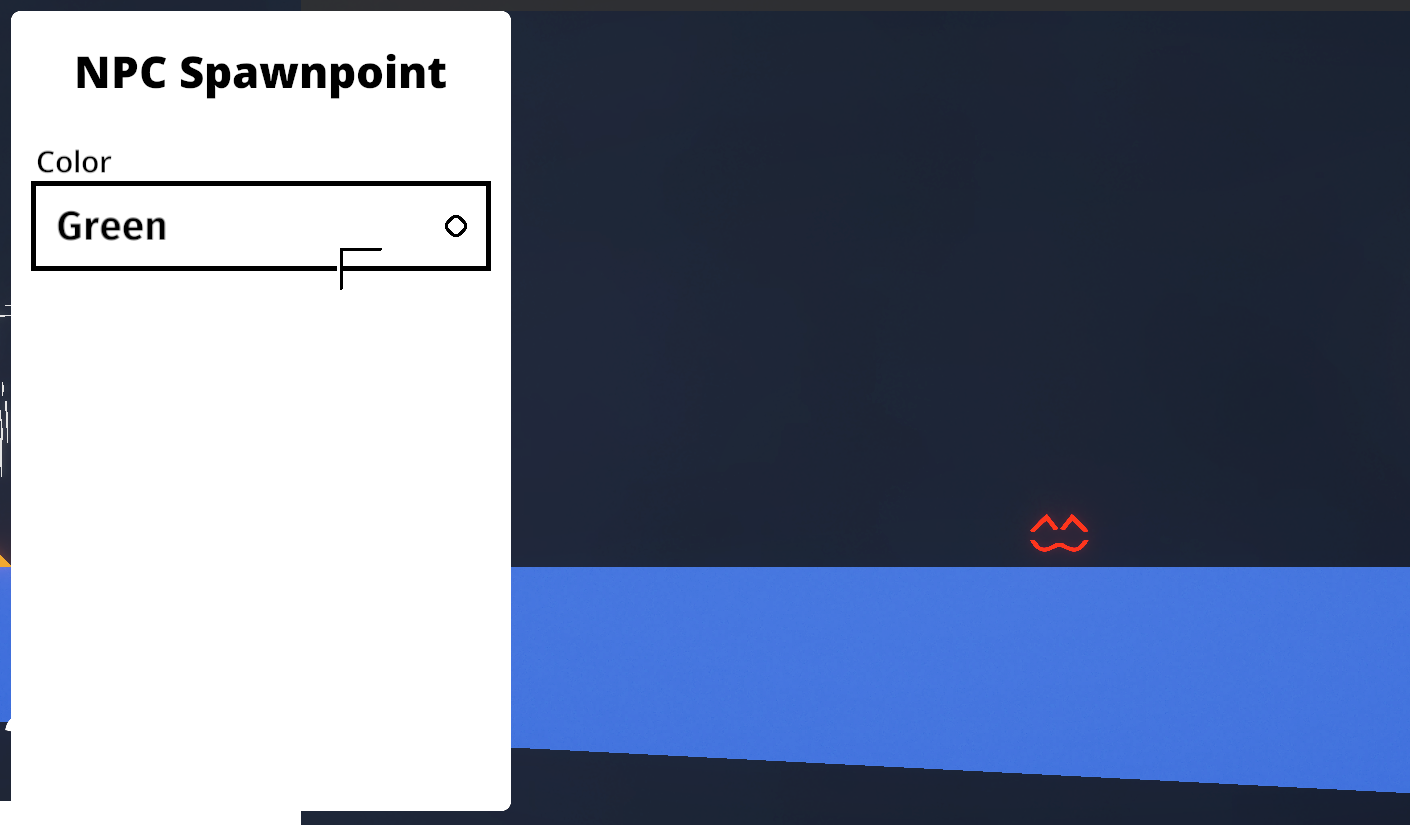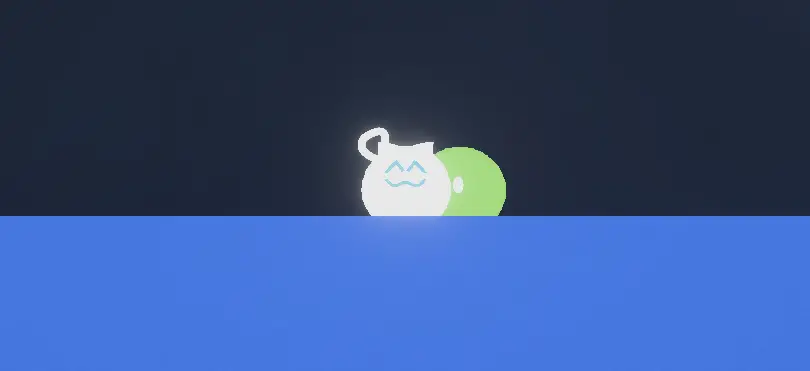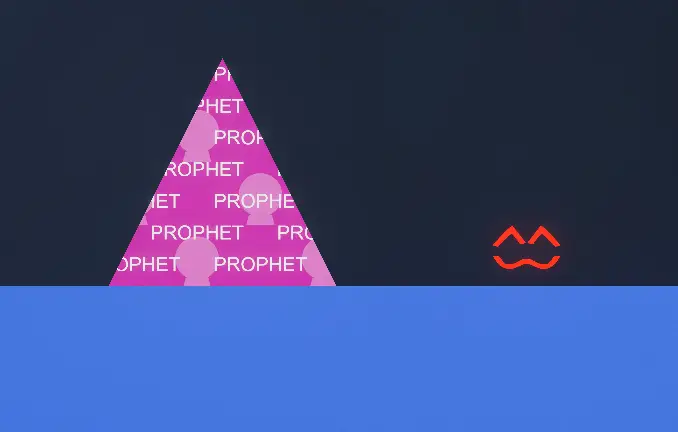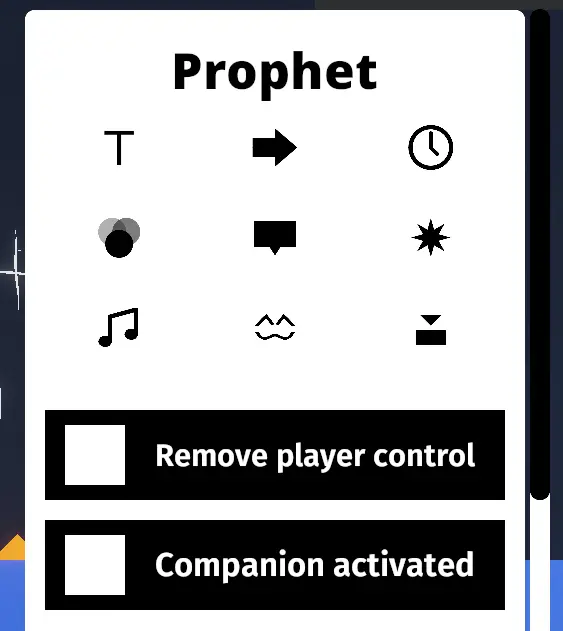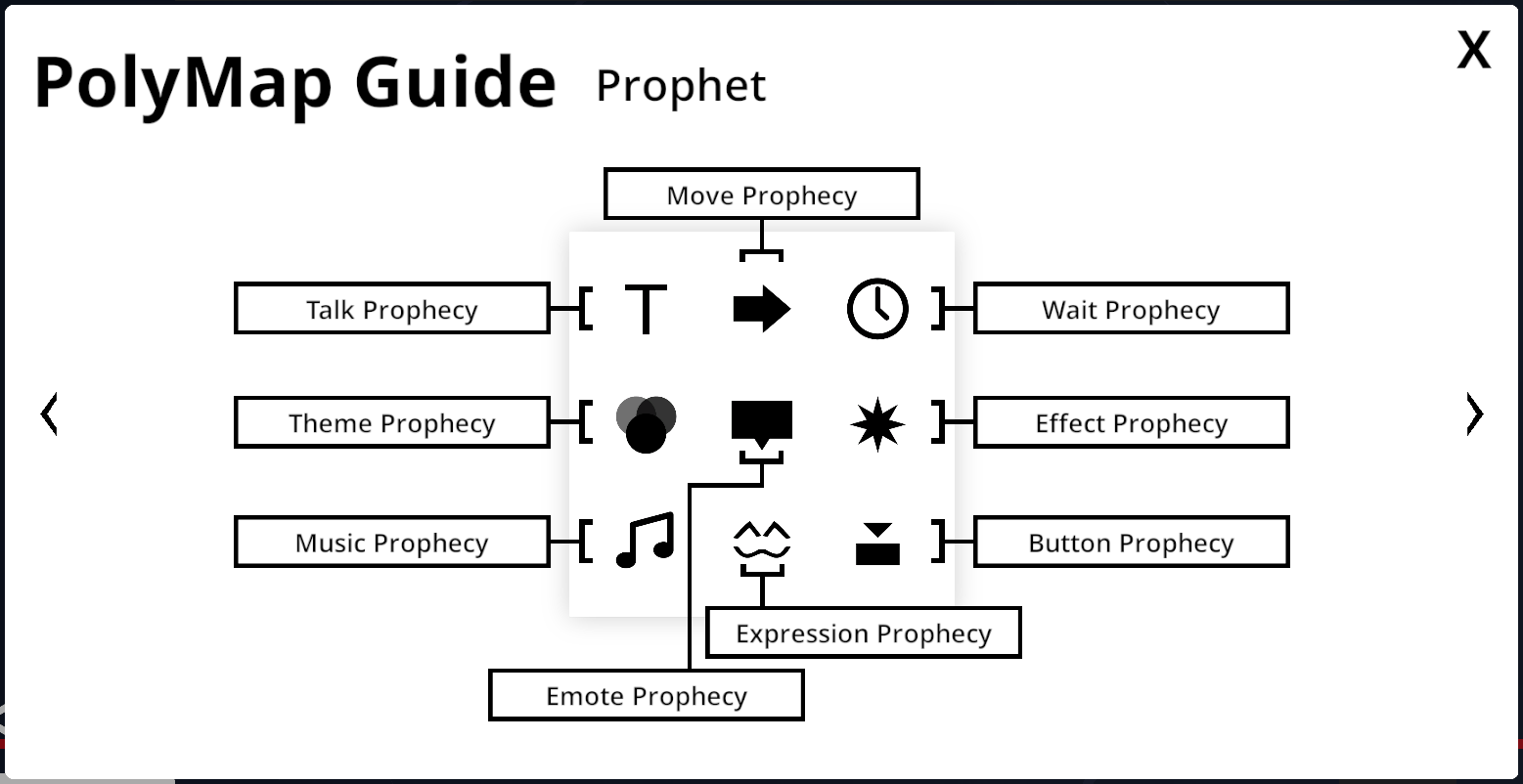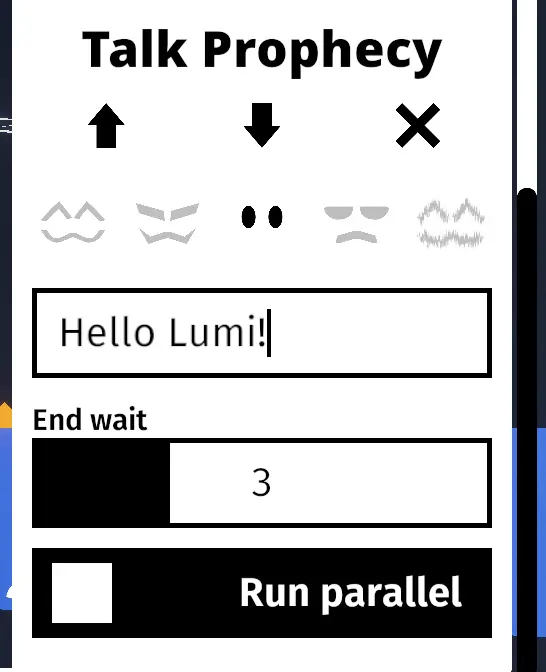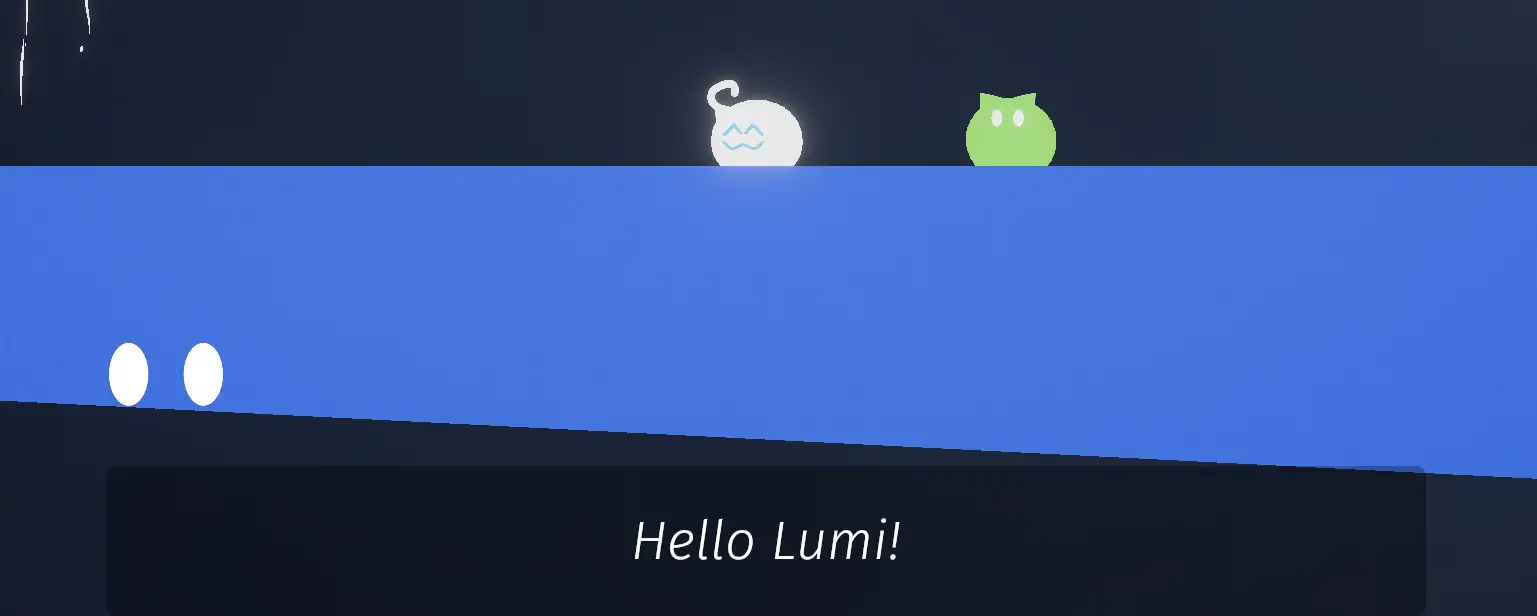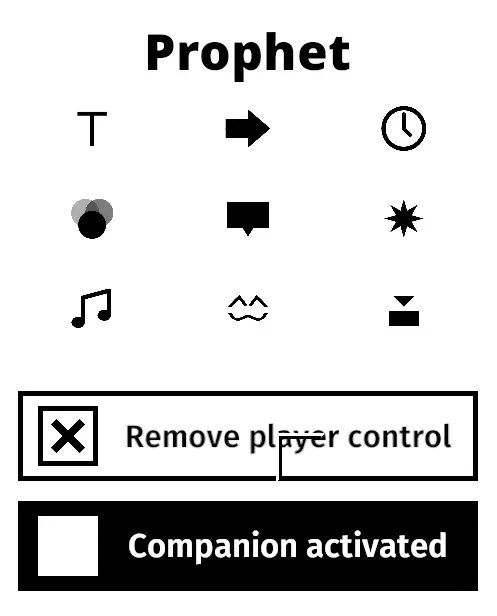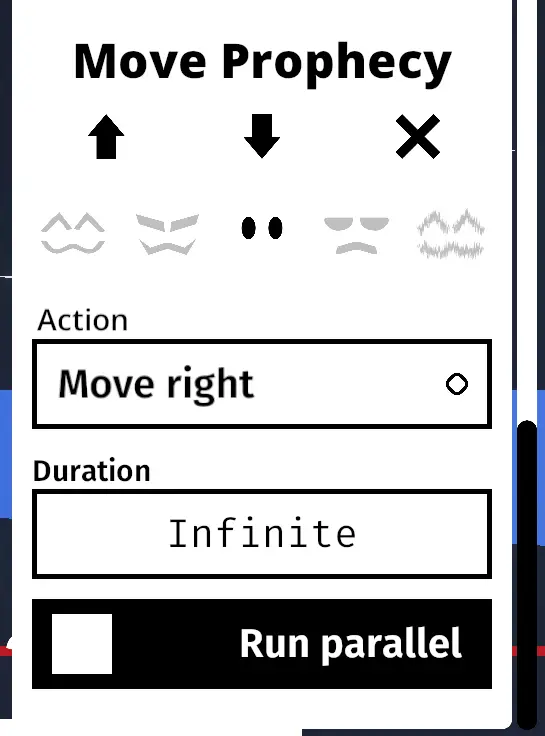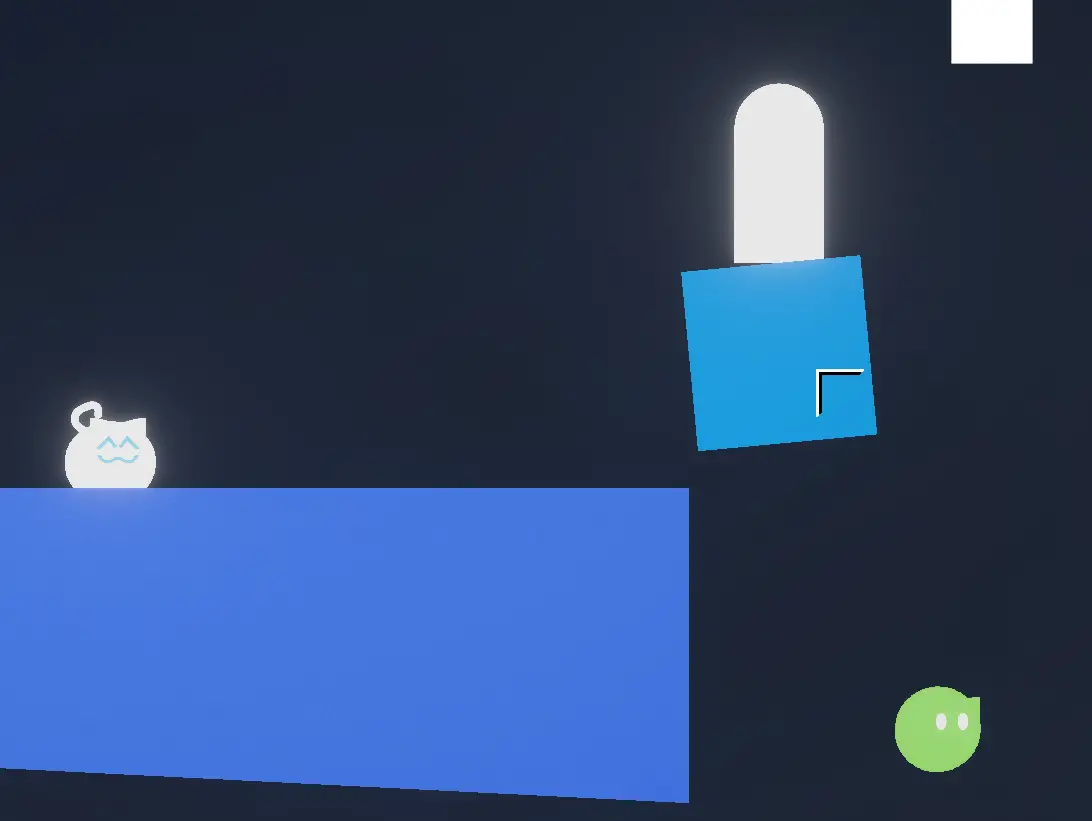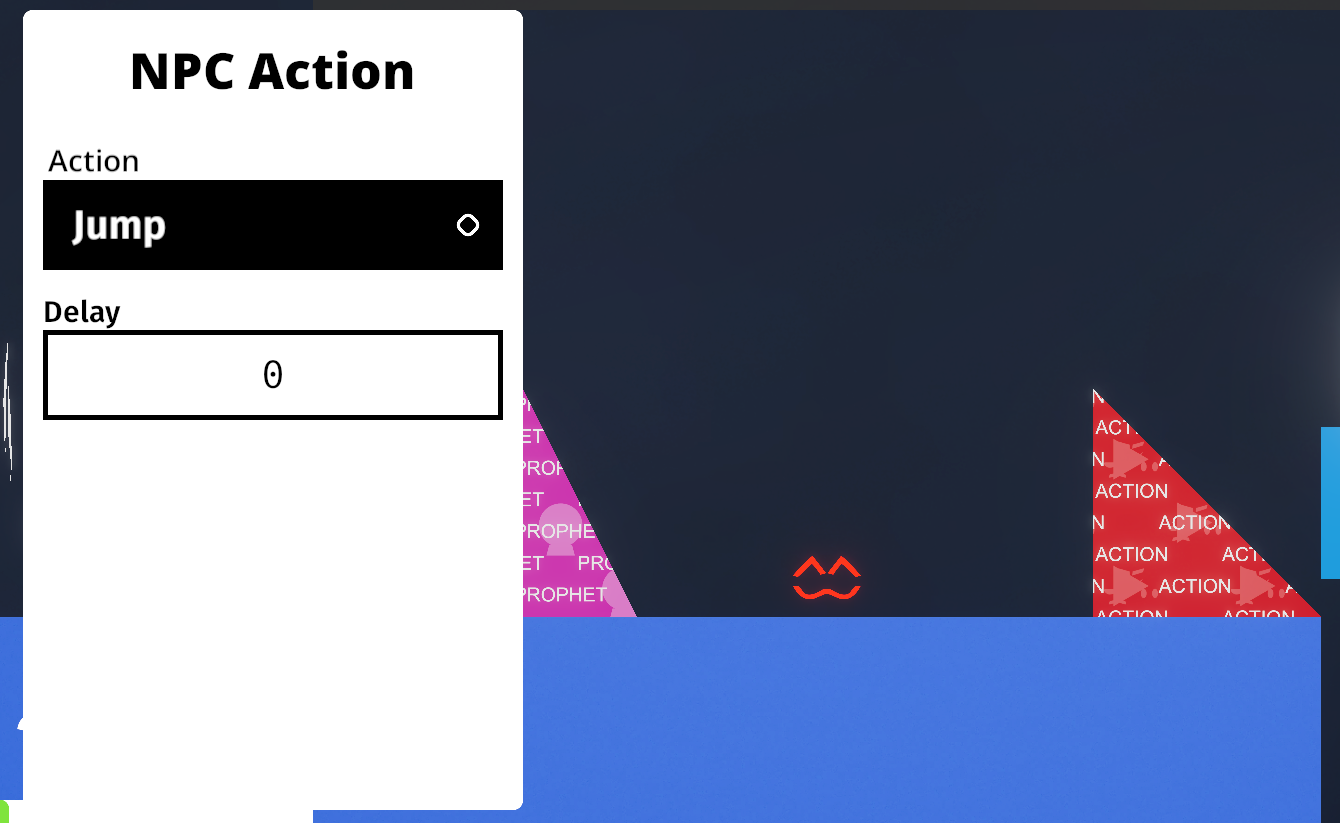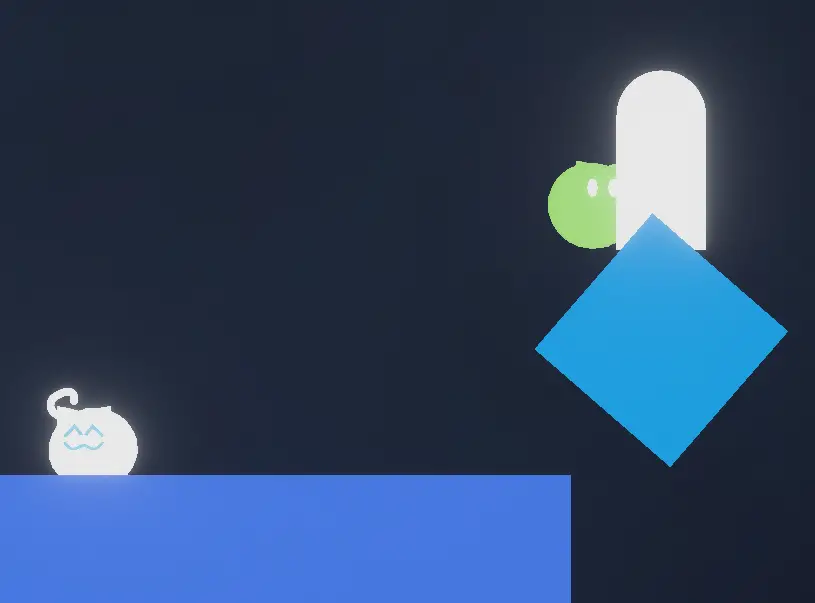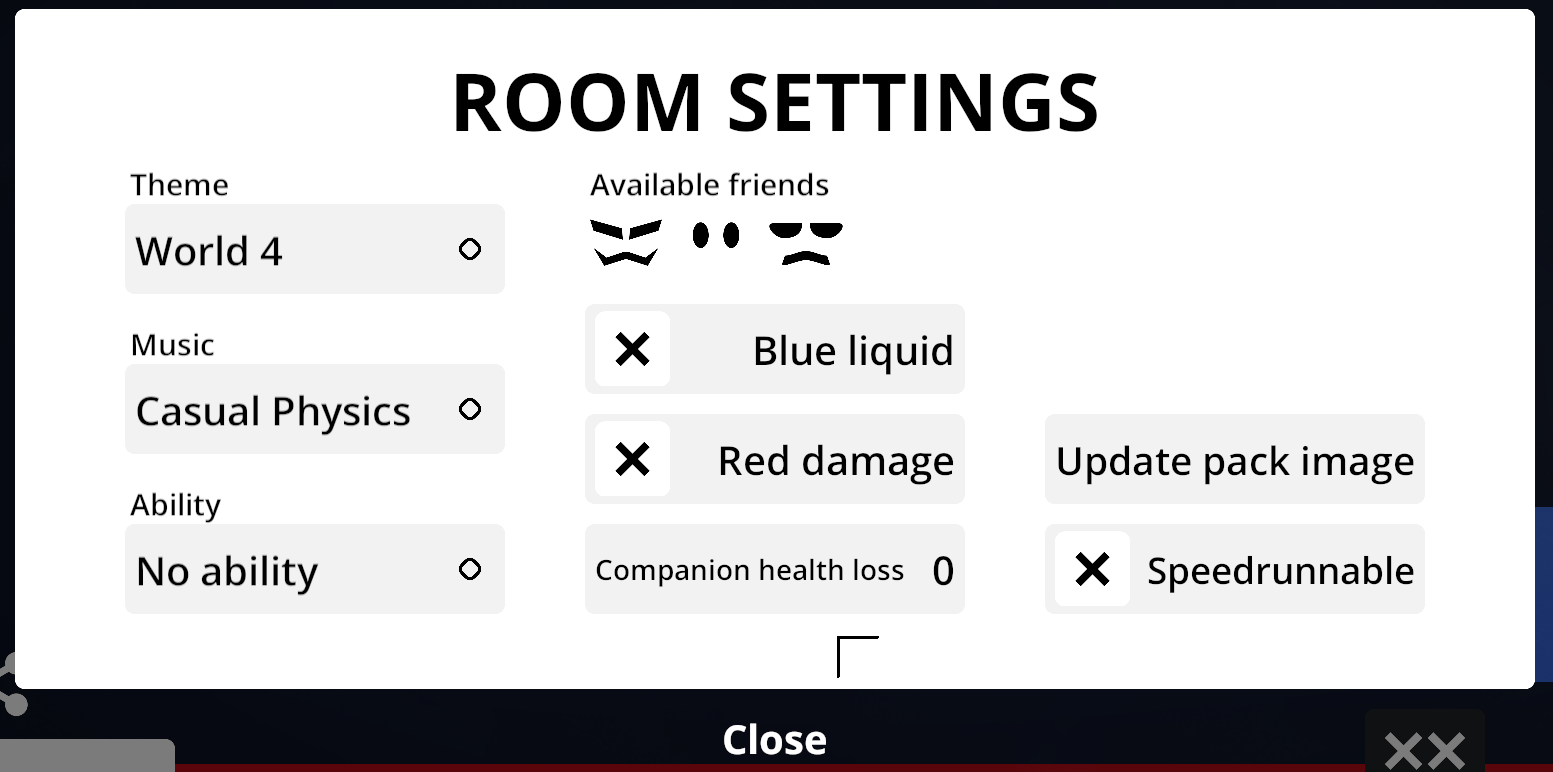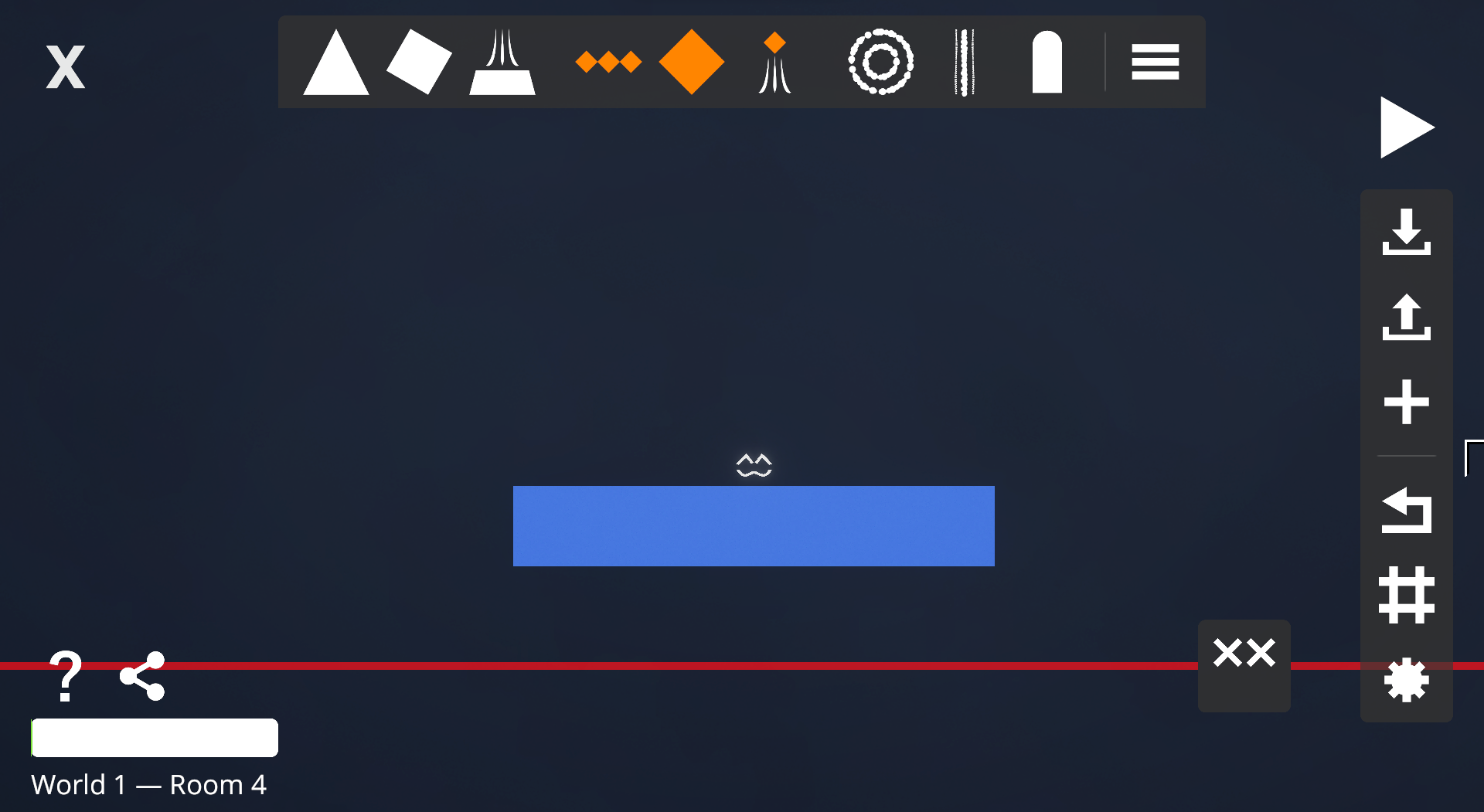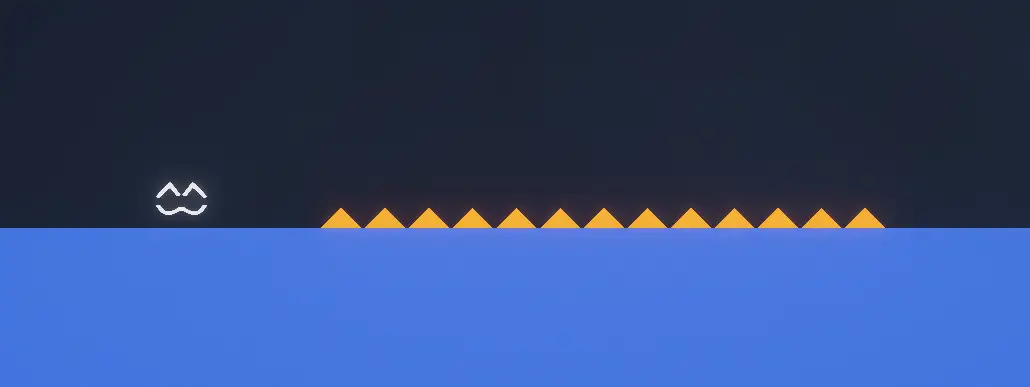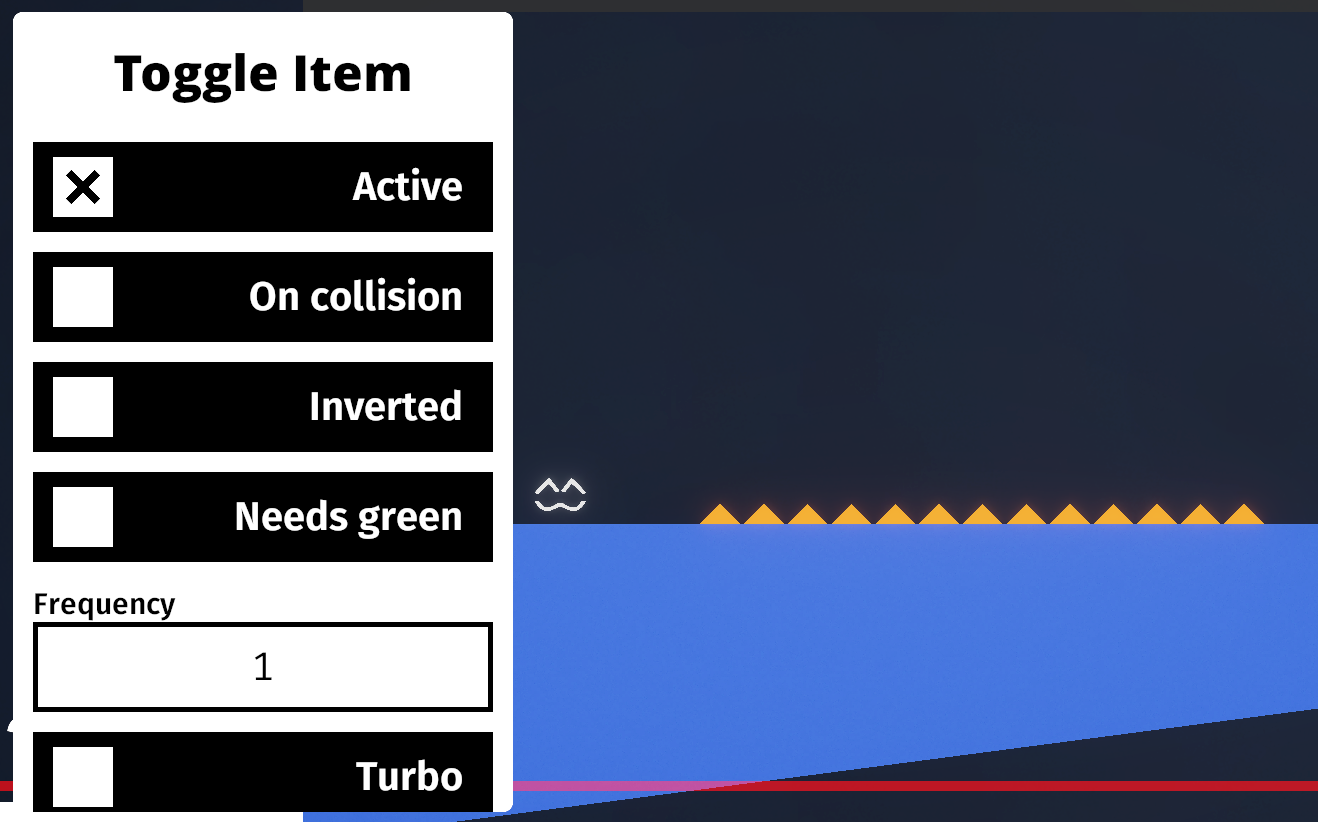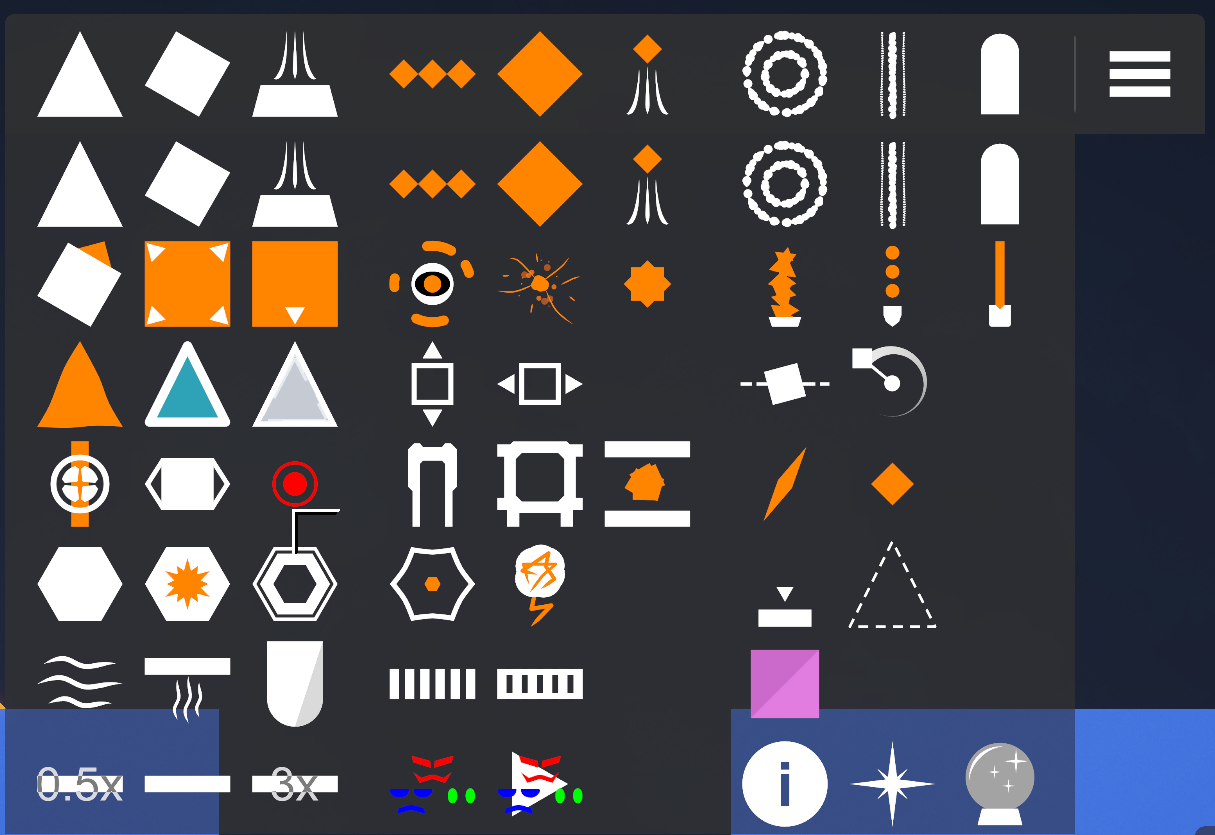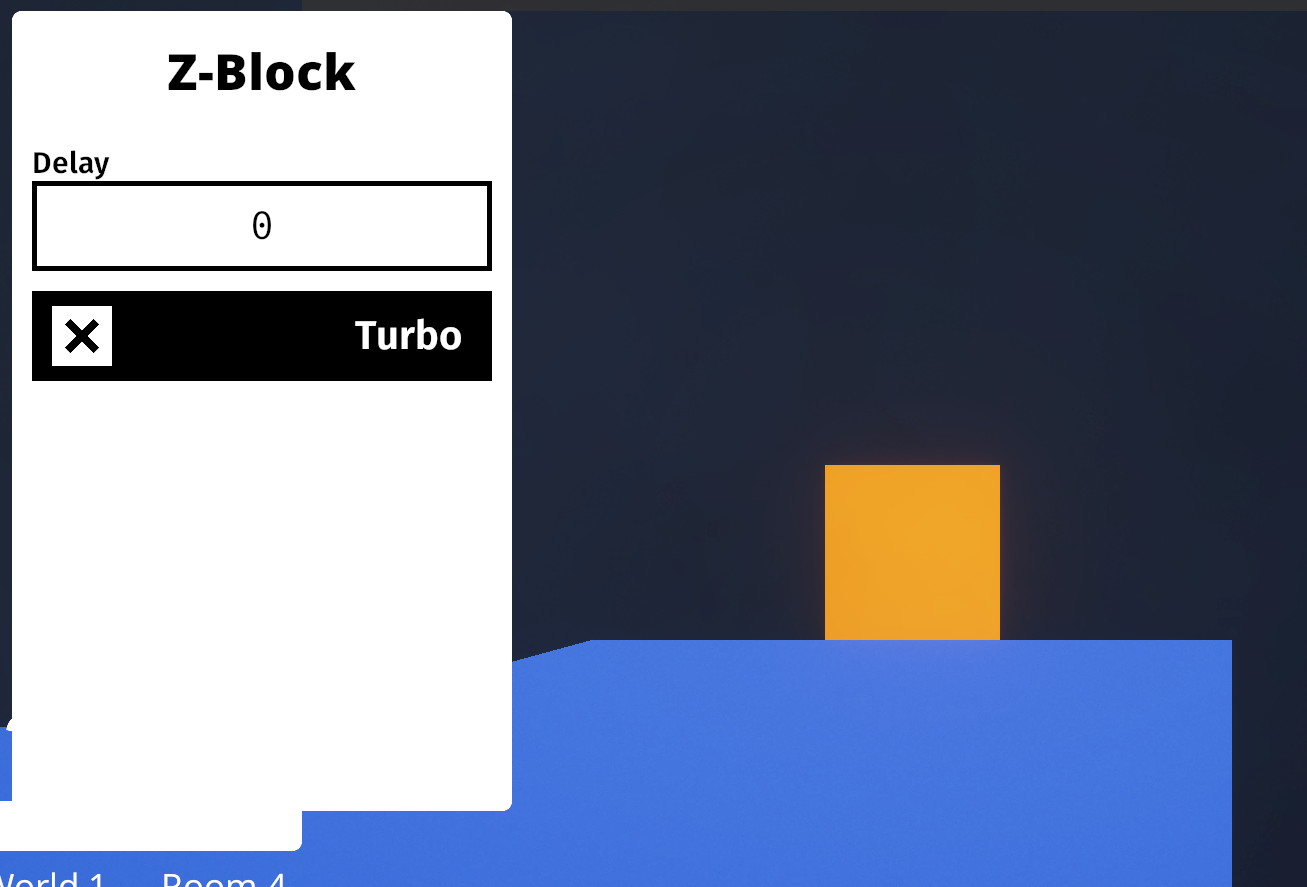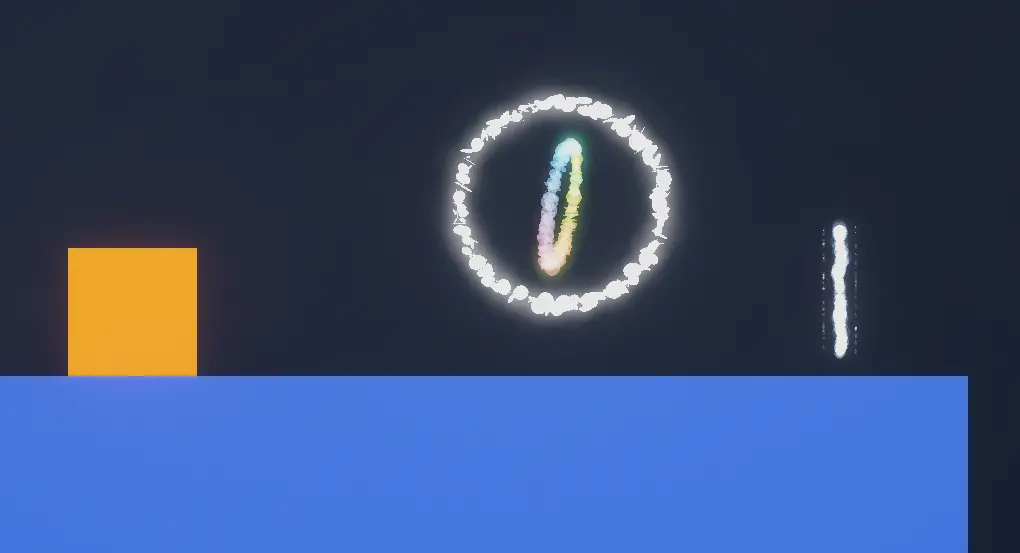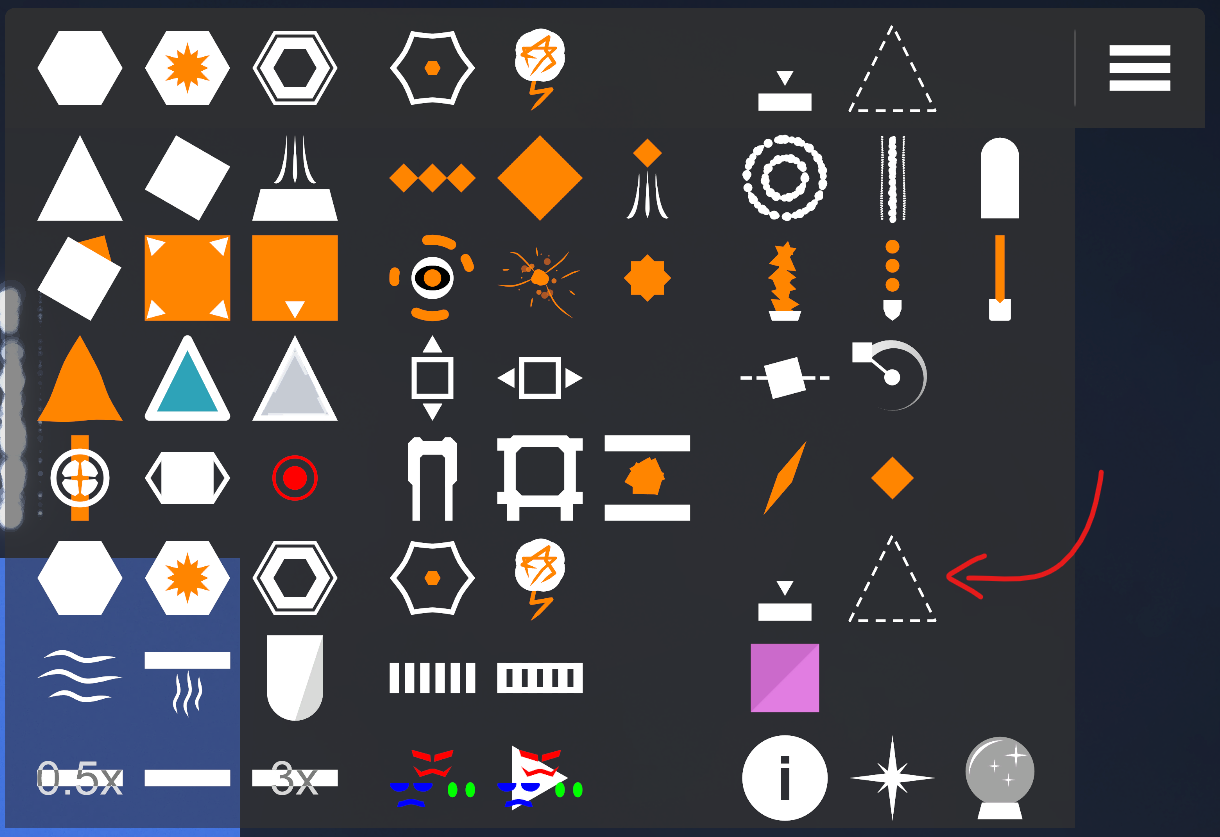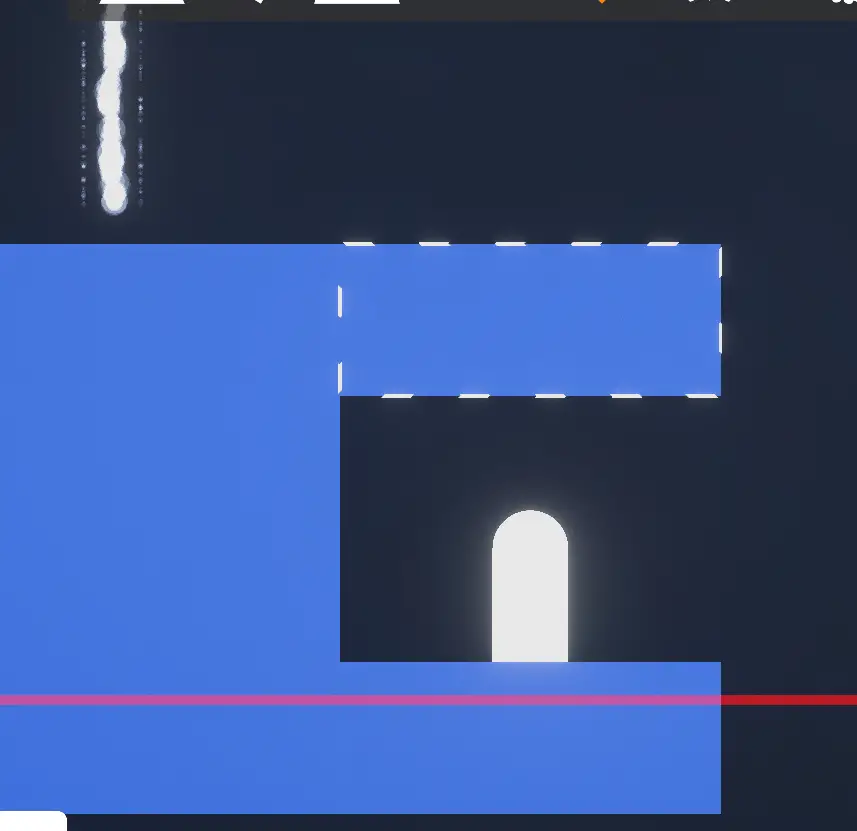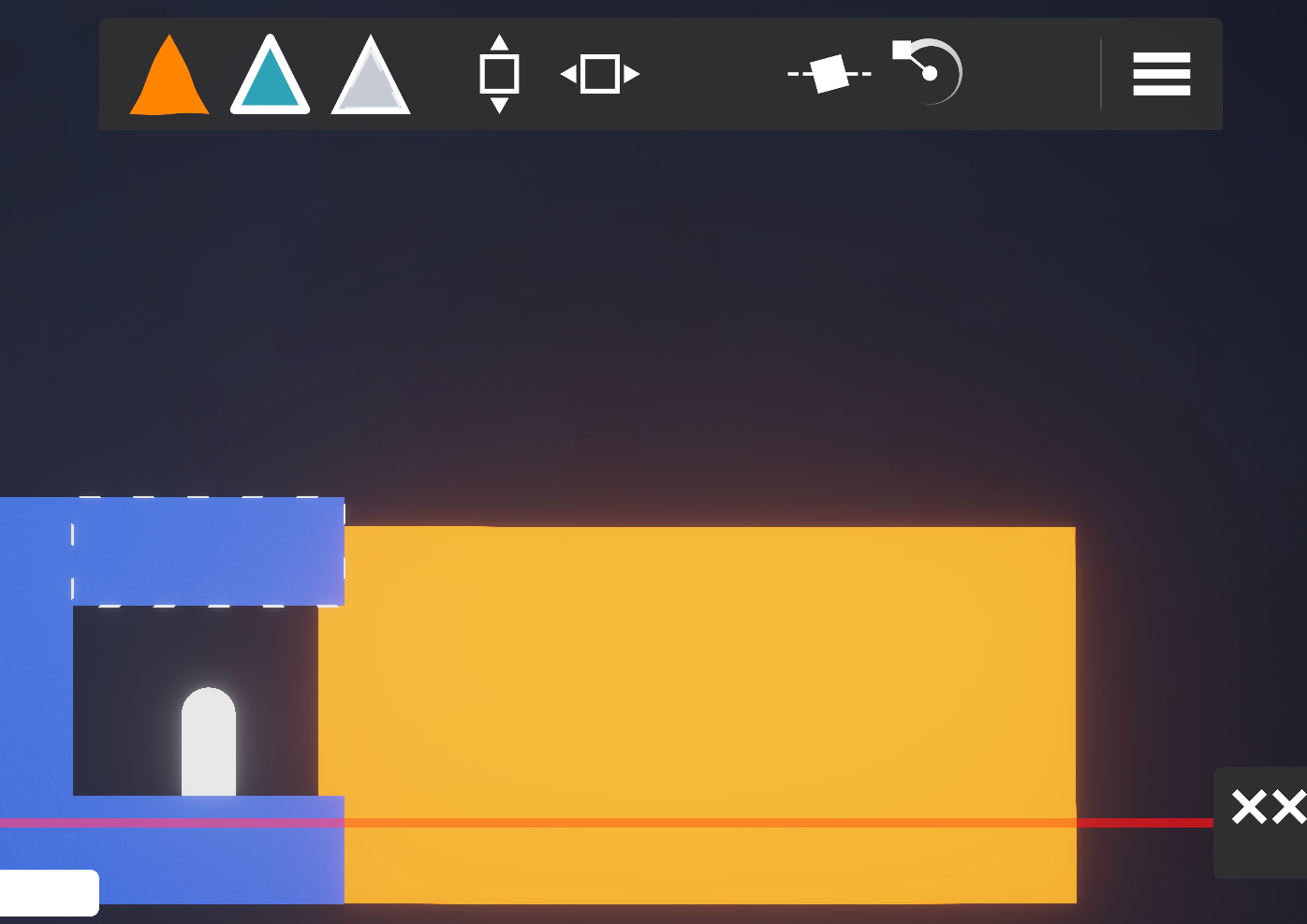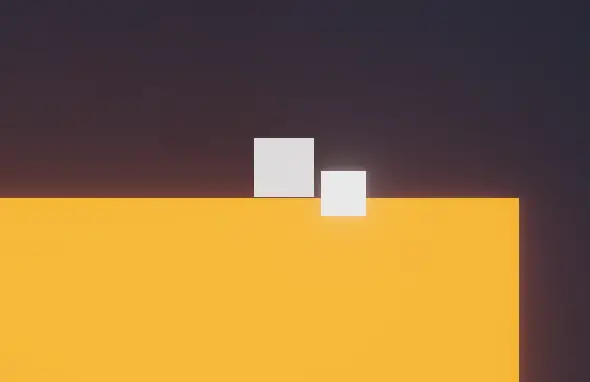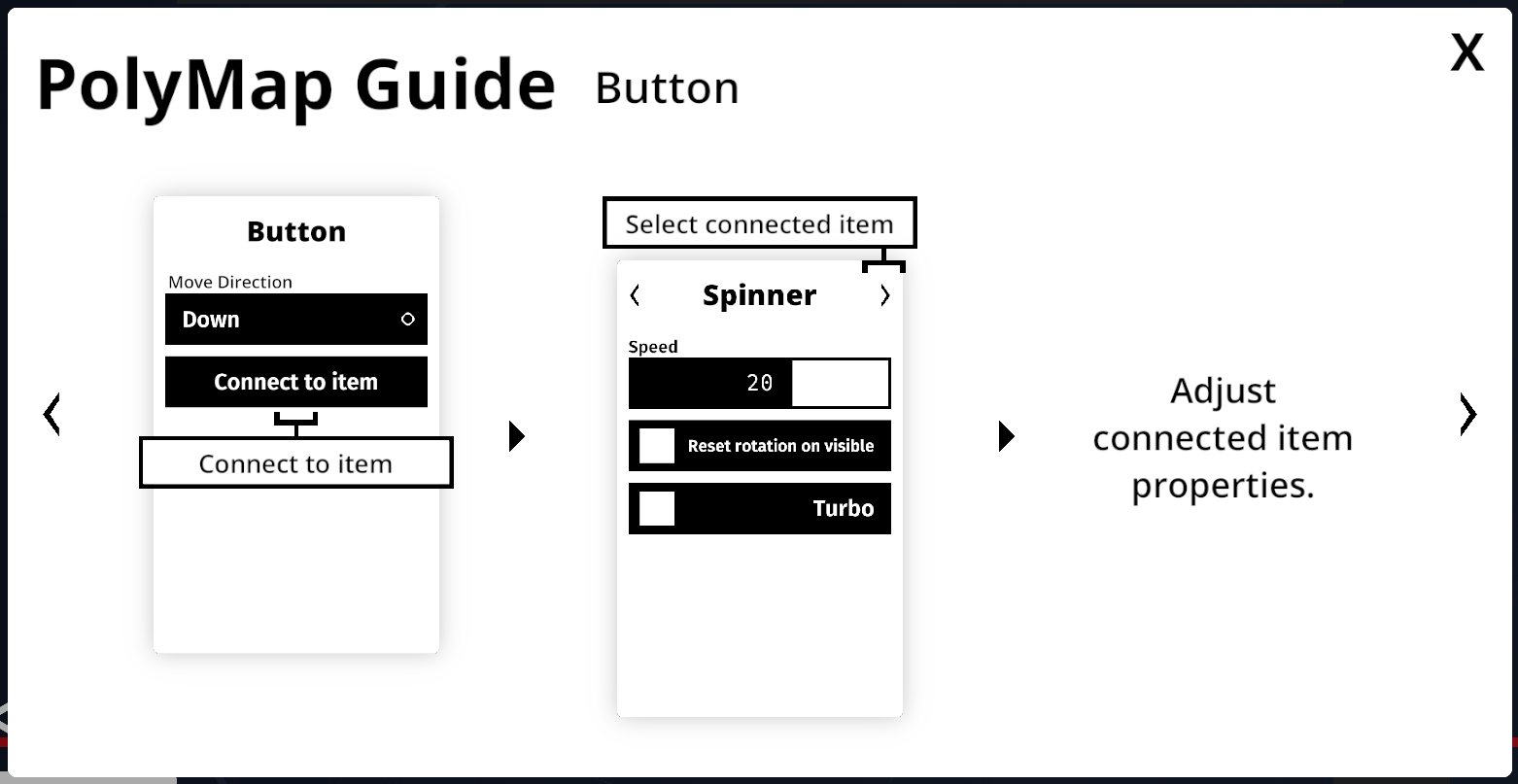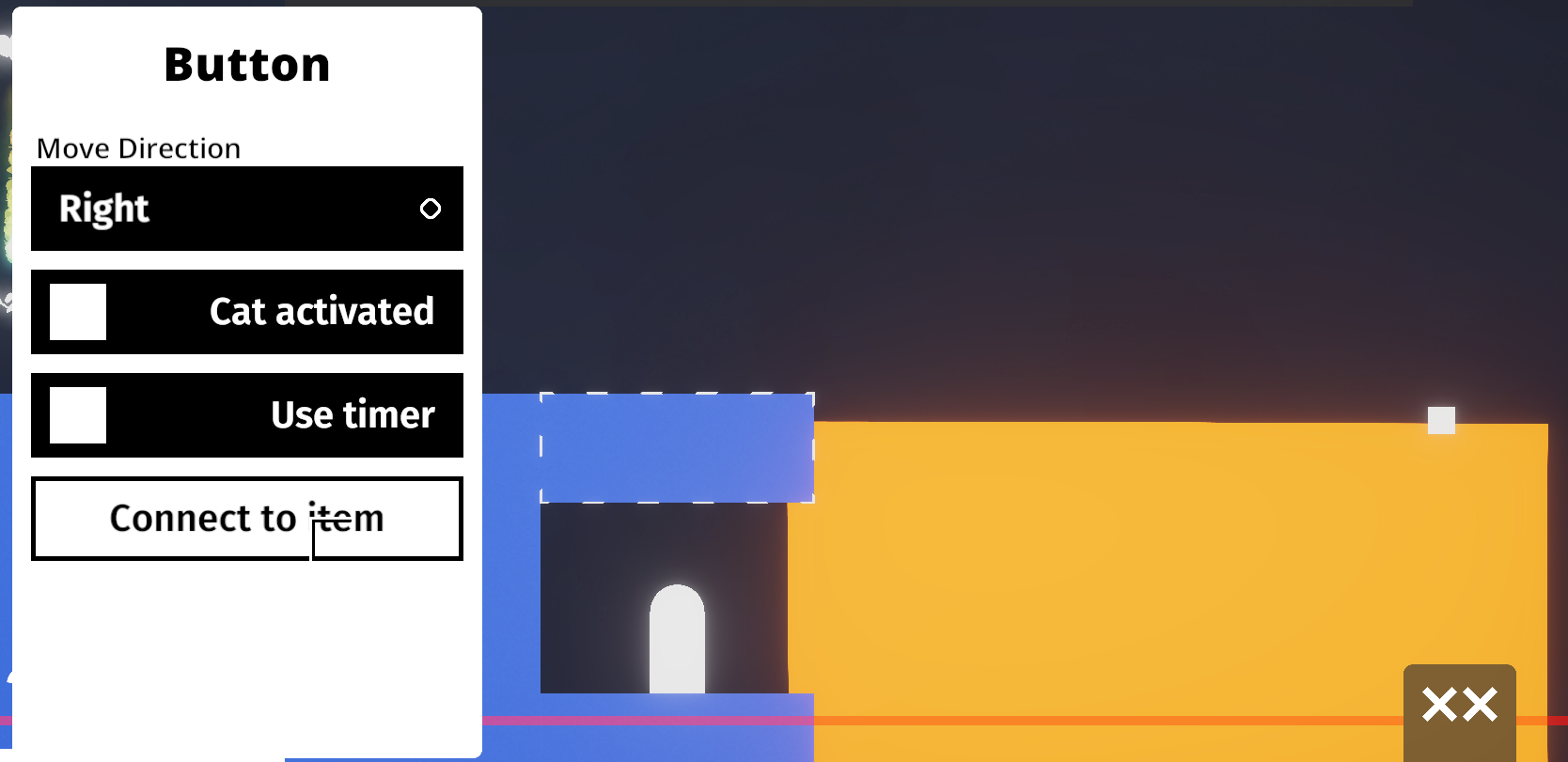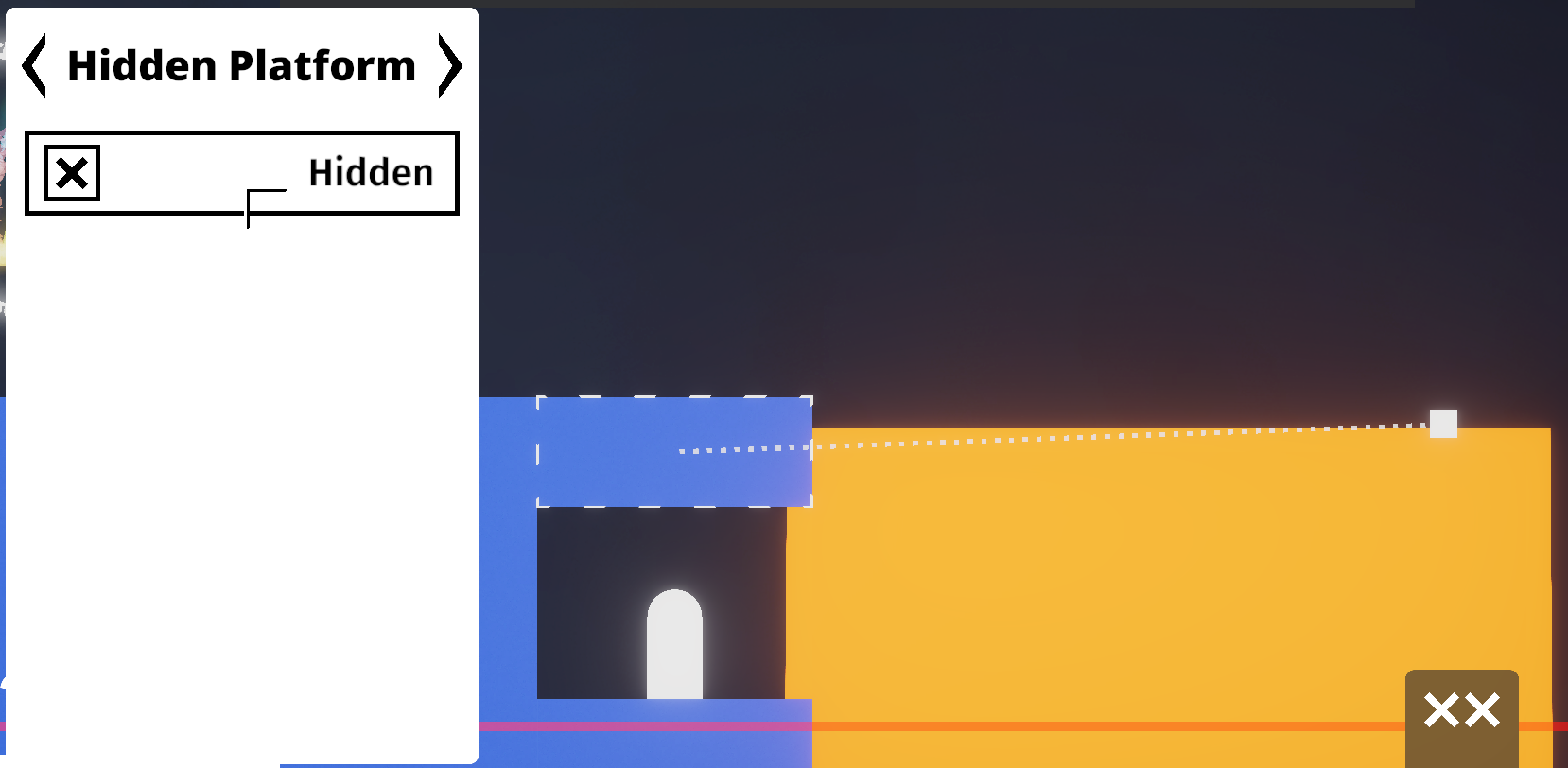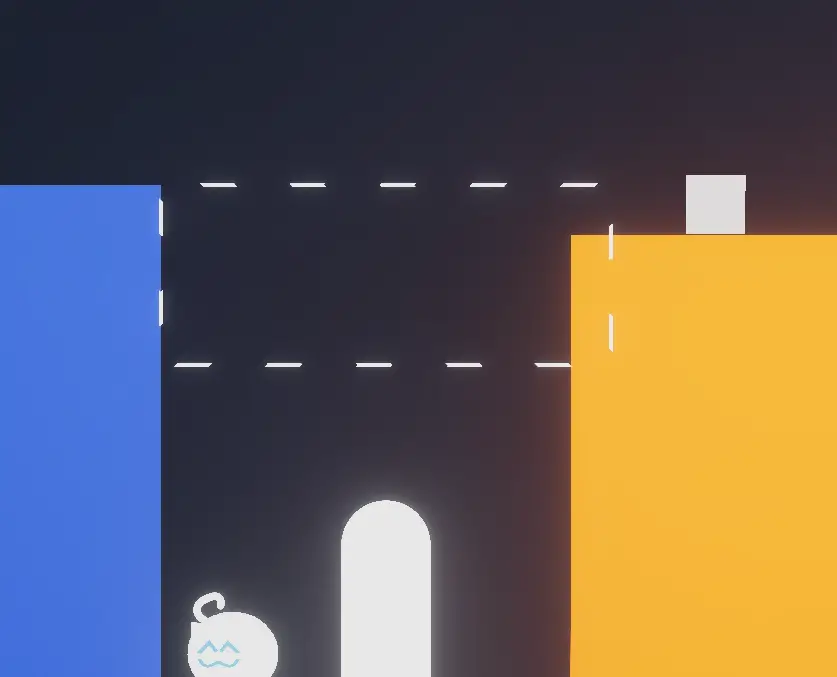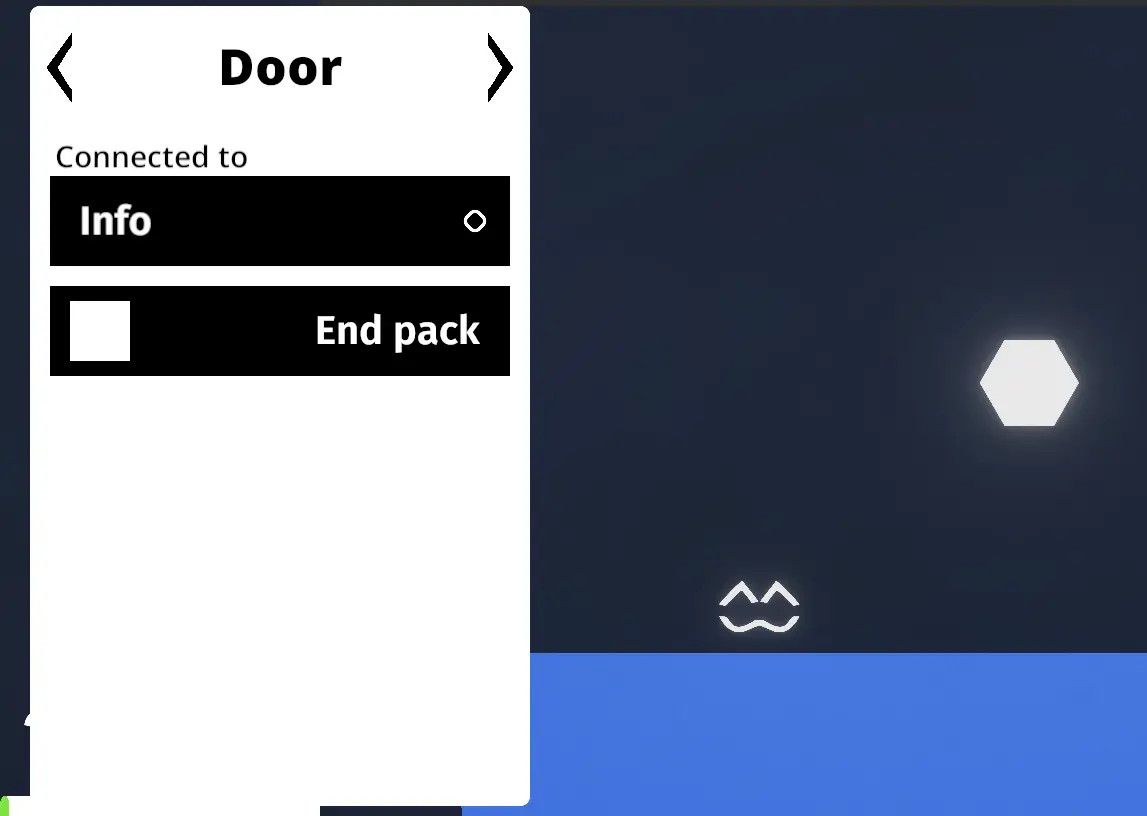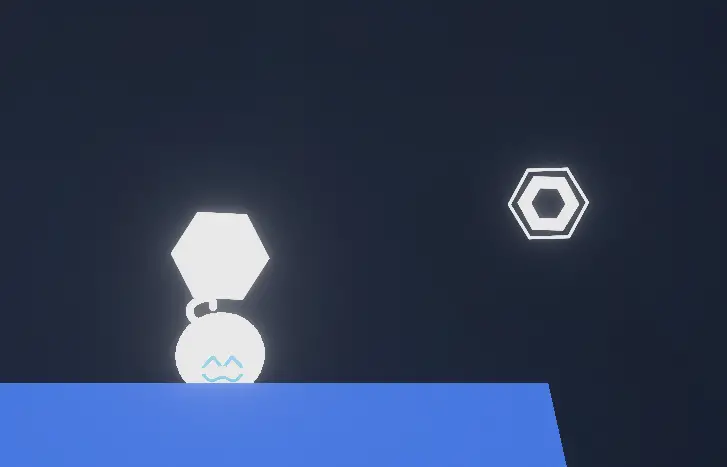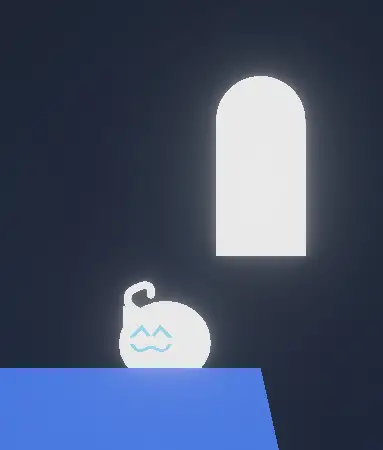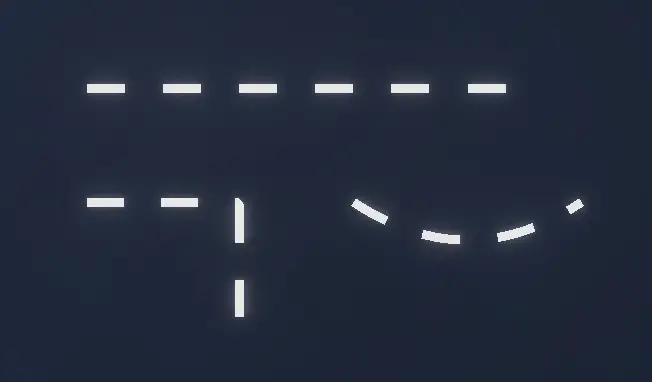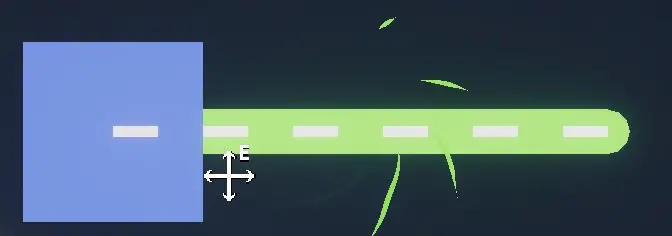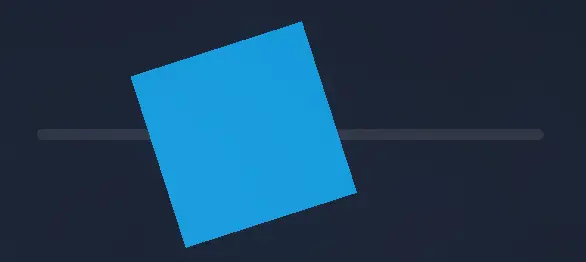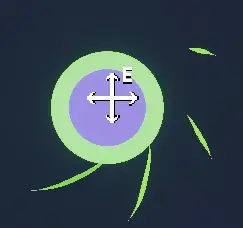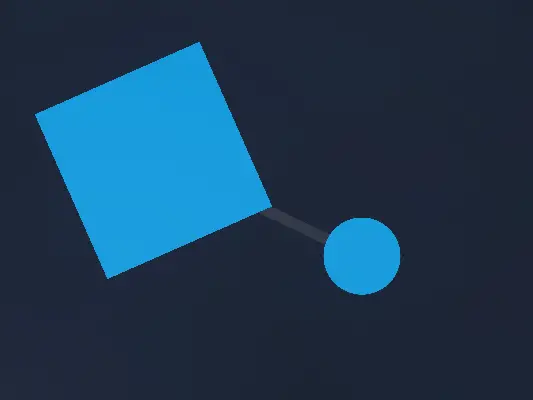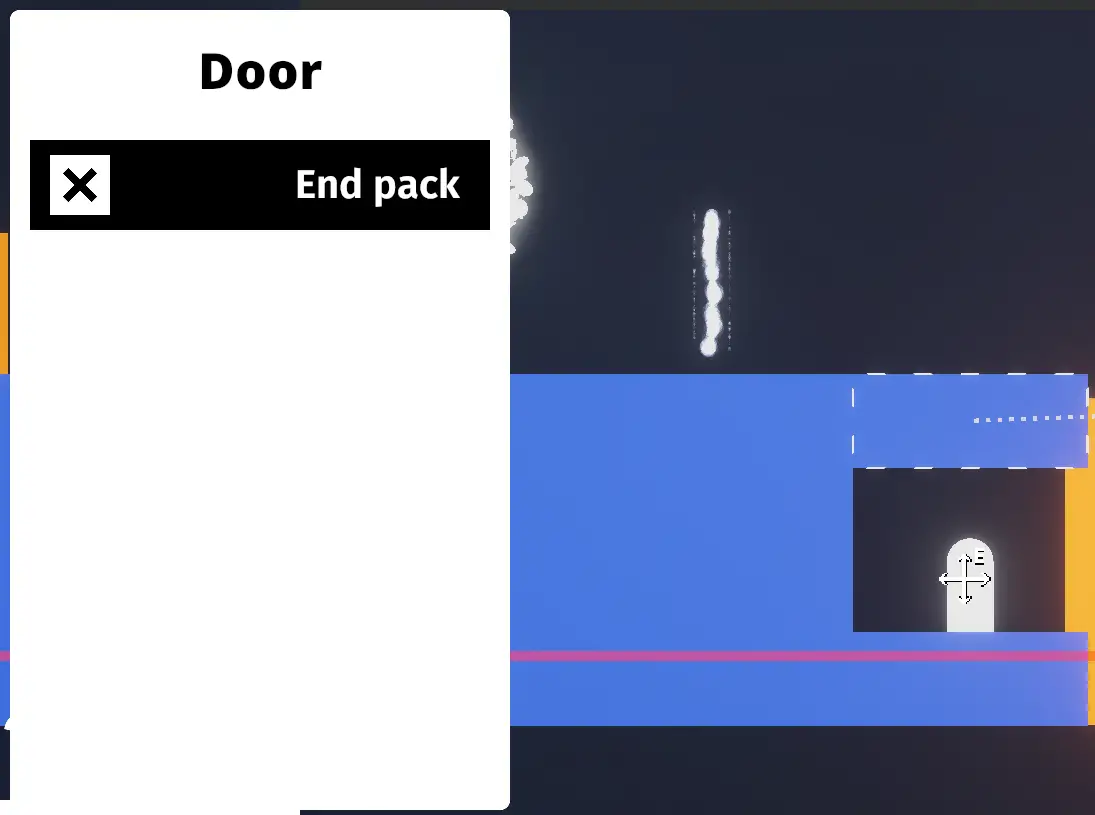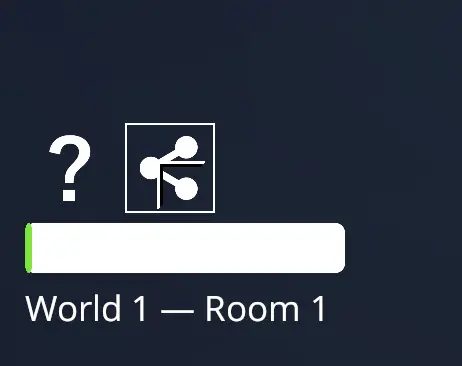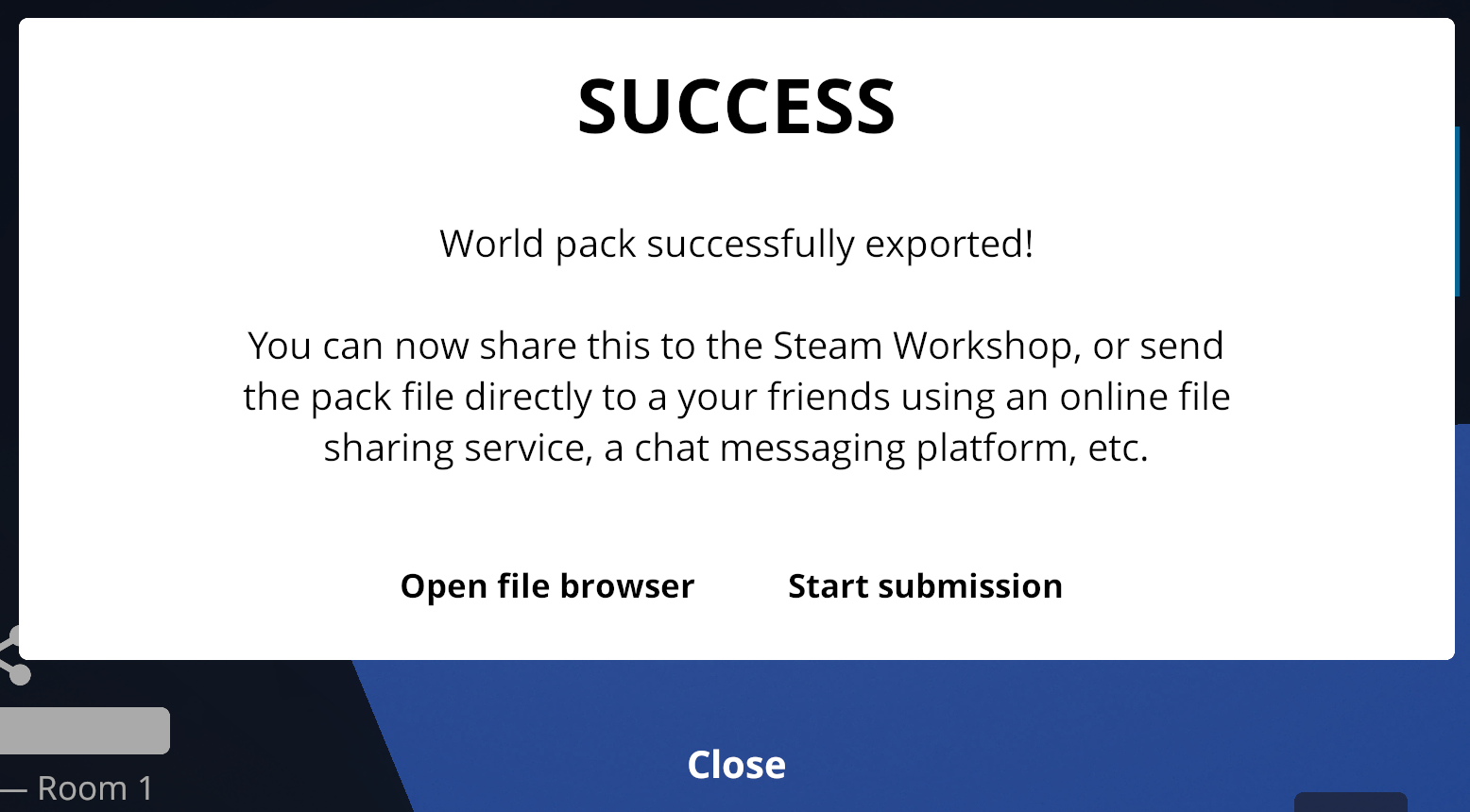Welcome to the guide that will provide you with everything you need to know for creating levels in Cats are Liquid: A Better Place. Que vous’re seeking assistance with a specific part of the editor or are completely new and feeling lost, ce guide est là pour vous aider. It will cover the basics of working in the Editor, including the following:
- Creating and deleting objects
- Connecting rooms together
- Giving and using powerups
- Utilizing prophets to create cutscenes
- Basic techniques involving buttons
Please note that while this tutorial is designed to be easily followed on both mobile and PC, future guides may delve into more advanced topics such as specific items in the editor and advanced prophet or button techniques.
Sans plus attendre, laisser’commençons!
Starting Up
Dans ce tutoriel, we will be creating our own worldpack. You can follow along by opening up the game « Cats are Liquid: A Better Place » and clicking on the « Modifier » option located on the side.
As we are creating a new pack, cliquez sur « Create new » when prompted. You will then be asked to enter a name for your pack. Pour cet exemple, I entered « Example Pack, » but feel free to choose any name you prefer for your own pack.
En effet, getting started with creating a new pack was quite simple! Maintenant, laisser’s move on to exploring the actual editor itself.
Knowing the Editor
The editor may seem overwhelming initially, but rest assured that it becomes much easier to comprehend once you become familiar with its functionalities.
Pour commencer, laisser’s go over the basic controls for the editor:
- To add items, simply click on the desired items in the Dock and they will be placed in the room.
- To move items within the room, hold and drag them to the desired location.
- On touch devices, you can use two fingers to move the camera and navigate around the room.
- On PC, hold the Alt key and click to move the camera.
These controls will allow you to add and manipulate items within the editor effectively.
The Dock serves as a repository for the items used to create rooms. In the editor, you have access to all the items available in the base game, as the game itself was built using the same editor.
To access the full item selection, click on the three lines located on the right side of the Dock. This will open up the complete range of items that you can add to your rooms.
For those using a mobile device for editing, you will notice a pencil icon located to the right of the Dock. Tapping on this icon will open a drop-down menu with three options: a pencil for editing, a trash can for deleting, and two boxes with a plus sign for duplicating.
To effectively utilize the editor on mobile, you will need to become accustomed to switching between these three options frequently based on the action you wish to perform (modifier, supprimer, or duplicate).
Located in the bottom left corner of the editor interface, you will find the general room information section. This area provides essential details such as the current world and room you are editing. En outre, you will notice the object limit bar, which indicates your progress towards reaching the maximum object limit for the room. Once you reach this limit, you will be unable to add any additional items.
En outre, two buttons are present in the bottom left corner. The question mark button allows you to access the in-game tutorial slides if you need guidance or assistance. The share button provides options for exporting and sharing your created worldpack with others.
On the right side of the editor screen, you will notice a sidebar that contains several important buttons and features. Celles-ci incluent:
1. New World/Room: Allows you to create new worlds or rooms within your worldpack.
2. Sauvegarder: Enables you to save your current room progress.
3. Undo: Undoes the most recent action, allowing you to revert changes.
4. Gridlock: Toggles the gridlock feature, which aligns objects to the grid for precise placement.
Il’s important to note the presence of a red line on the screen, known as the death plane. If Lumi, the cat character, falls below this line, she will instantly die. De la même manière, if the Companion falls below this line, it will teleport back to Lumi. Be mindful of this boundary when designing your rooms to ensure proper gameplay mechanics.
Enfin, laisser’s consider the actual contents of the room. Each room is required to have a Spawnpoint object, which can be relocated but not removed. En outre, to ensure the room is completable, it must contain at least one Door.
Feel free to experiment and rearrange the objects in the room. Enfiler’t hesitate to click on the Play button located in the top right corner to test your current room configuration.
What is Polymap?
Maintenant que nous’ve familiarized ourselves with the editor and object placement, laisser’s begin creating our room! toutefois, before we dive into the design process, il’s important to understand the significance of polymap.
Polymap plays a vital role in the ABP editor as it allows us to generate dynamic objects. By utilizing points, connu sous le nom « joints, » on the polymap, we can manipulate and control these objects. These joints are interconnected through lines, effectively forming the structure of the object.
Among the various objects in the editor that utilize polymap, the most frequently encountered one is the ground object.
Dans l'image fournie, we can observe the four points of the default ground object. To view these points, simply click on the ground object.
By dragging these points, we have the ability to modify the shape and dimensions of the ground, thereby altering its size and form.
En outre, we can create additional points by clicking on the plus buttons located between each existing point. This allows us to insert new points and further refine the shape of the object.
Points can be manipulated and created using various methods within the editor. toutefois, il’s important to note that if the ground object covers Lumi, the Spawnpoint object, il deviendra rouge. En outre, the publish button, typically found in the bottom left corner, will be replaced with a warning icon. This serves as an indication that the current configuration may hinder the functionality of the room.
This limitation exists because it’s not possible to share a worldpack in which Lumi is trapped within the ground. toutefois, you can still freely experiment and play around with this pack on your own. To rectify the issue, simply drag the Spawnpoint object out of the ground, ensuring that it is not submerged. Ce faisant, you will resolve the problem and be able to proceed with publishing the room.
When working with a polymap object, you have the option to select a single point and apply a curve to it. On mobile, you can achieve this by pressing and holding the point, while on PC, you can press the E key while hovering over the point. This curved point tends to have a smoother appearance compared to the standard rigid points. Both curved and rigid points have their respective advantages and are used based on specific requirements and preferences.
Polymap is extensively utilized by various objects in the game, such as the ground, lave, eau, prophecies, and hidden platforms. These objects rely on polymap to define their shapes, dimensions, and interactive properties within the game environment.
Certain objects, like spikes, employ line polymaps. In these instances, the polymap is one-dimensional, allowing for extension and control similar to other objects. Despite being limited to a single dimension, it is still possible to create an infinite number of points on the line polymap and apply curves as needed. This provides flexibility in shaping and designing the object to suit your preferences and requirements.
Adding Objects
I employed the previously utilized curved polymap and augmented the ground spikes to enhance the distinctiveness of the layout. You have the freedom to exercise your creativity with the polymap, ensuring feasibility and fairness for the player.
Actuellement, it appears opportune to introduce a novel element. How about incorporating a spinner? Navigate to the Dock, located in the top bar, and opt for the selection of the spinner.
The spinner will be generated automatically at the center of your camera’s view. It is advisable to frequently adjust the camera position to ensure optimal spinner placement.
Feel free to drag the spinner to any desired location. If you are using a mobile device, ensure that your setting is configured to Edit mode, which can be identified by the pencil symbol located on the top right corner.
By pressing the play button, Lumi will be able to effortlessly jump onto the spinner!
toutefois, it appears that the current setup might be overly simplistic. To add a challenge, laisser’s increase the speed of the spinner. Pour y parvenir, suivez ces étapes: On mobile, press and hold the spinner; sur PC, hover your mouse over it and press the E key. This action will trigger a menu to appear, offering various controls for the spinner. Adjusting the speed to around 50 units per second could be a suitable choice, although you can select a value that best suits your specific room design and desired level of difficulty.
Il’s worth noting that you have the option to use both positive and negative values for the spinner’la vitesse. Alternativement, if you prefer a stationary spinner, you can set the speed to 0. Static spinners can serve as visually appealing alternative ground elements.
You know what? Laisser’s take it a step further! Choisissez le « Turbo » option to make the spinner rotate at an exceptionally high speed!
The spinner is now moving at a satisfyingly fast pace! toutefois, considering that this is only the first room, it might be beneficial to make it slightly easier for new players. Pour y parvenir, laisser’s remove the spikes so that players can safely experiment with the turbo spinner. We can then introduce it in a more challenging setting in the subsequent rooms.
Si tu’re using a mobile device, switch your editing mode to Delete by selecting the trash can icon located at the top right corner. Simply click on the spikes to delete them, being cautious not to accidentally delete the ground. In case of any accidental deletions, you can use the Undo button on the right sidebar to restore the deleted elements.
On PC, click on the spikes and then press the Backspace key to delete them. Alternativement, you can right-click on the spikes and choose the delete option.
Once you have removed the spikes, you can further enhance the level design by extending the ground polymap slightly and duplicating the spinner. To duplicate the spinner, set your editing mode to Duplicate on mobile and click on the spinner. On PC, hover over the spinner and press the D key. En outre, you can introduce more obstacles by selecting them from the first row of the Dock and placing them strategically within the level.
You have the freedom to apply similar modifications to your own room or tailor them to suit your personal style. Souviens-toi, il’s your worldpack, so feel free to unleash your creativity and make choices that align with your vision and preferences!
Making New Rooms
I would say that our first room is complete!
toutefois, the possibilities don’t have to end there. Most worldpacks typically consist of multiple rooms or even several worlds. Before proceeding to create a new room, enfiler’t forget to click on the Save button located on the right sidebar. This will ensure that your progress is saved and you can easily continue building upon your worldpack.
To avoid any potential loss of progress, il’s crucial to save your rooms frequently. This will help ensure that you can preserve your work and prevent any unintended setbacks.
Quand tu’re ready to create a new room, simply locate and click the plus button on the sidebar. This action will initiate the process of generating a fresh room for you to explore and expand upon.
Select the option labeled « Chambre » and input « Chambre 2 » plutôt. I have discovered that it is more convenient to assign numbers to my rooms for better organization. When players access the pause screen while playing your pack, they will only be able to view the names of the rooms.
Chambre 2 has been made!
Upon initial observation, Chambre 2 appeared to be just as uninteresting as Room 1. To alleviate this, I modified the ground elevation and introduced a large spike. To avoid the monotonous default appearance, I suggest incorporating your own personal touches and customization to make the room more engaging and captivating.
Bonjour! Pay close attention to this crucial section!
Having spent close to a year in the Last Quarter Studios Discord server, I can confidently state that almost everyone encounters this issue when designing packs. There is a common misconception that the door of Room 1 will automatically connect to Room 2, Mais ce n'est pas le cas. We will need to revisit Room 1 and establish the necessary connection manually.
Pour commencer, reload Room 1 by clicking on the designated load button located on the right sidebar. Alors, choose Room 1 à partir des options disponibles:
Shift the camera’s focus towards the Door and select it. On mobile, this can be done by pressing and holding the Door, while on PC, en appuyant sur le « E » key will achieve the same result. A menu will appear, containing a drop-down list. Click on the drop-down and choose « Chambre 2 » from the options provided. Ce faisant, the Door will now transport the player to the next room seamlessly!
Enfiler’t forget to follow this procedure for every new room you create! Doors serve as the connections between rooms, allowing smooth transitions. Although it may appear unnecessary at first, this approach provides numerous possibilities for incorporating alternate endings and branching paths within your worldpacks.
Powerups
Chambre 2 presents a suitable opportunity to experiment with powerups. There are two ways to provide powerups to the player:
- Via a Power Ring
- Automatically within the specific room
Dans ce tutoriel, we will utilize both methods.
The Power Ring
To grant the player an ability through a Power Ring, you will require… Bien, a Power Ring (impressive, est-ce que’c'est ça?). Power Rings can be found in the first row of the Dock. Create some room in Room 2, and introduce the Power Ring to the scene!
To select the Power Ring, follow the same method you have been using for other elements: press and hold on mobile or press « E » sur PC. Once the menu appears, click on the drop-down and choose the « Floating » capacité. While you have the option to select any ability available in the base game, for the sake of simplicity in this tutorial, we will only focus on specific abilities.
Hé, you can fly now!
Due to the lengthy activation time of Power Rings, it is advisable to place a Checkpoint immediately after one. This ensures that if the player dies, they can respawn right after obtaining the Power Ring. Il’s important to note that in certain cases, the player may need to regain the ability upon respawning, depending on whether they activated the Checkpoint before or after acquiring the Power Ring.
The Checkpoint is positioned adjacent to the Power Ring. Please keep in mind that only one Checkpoint can be added per room.
Another Room
Maintenant, laisser’s expand the availability of the ability to another room! Pour accomplir cela, we need to create a new room called « Chambre 3 » by clicking the plus button on the sidebar. Once the new room is created, use the load button to return to Room 2 and establish a connection with the Door, ensuring a seamless transition between the two rooms.
If you are familiar with the base game, you may recall that the gas ability was often combined with wind mechanics. The wind object, which resembles a line polymap object (similar to spikes), can be found on the second-to-last row in the Dock. Click on the three lines on the side to expand the options and select the wind object.
We have the ability to control the line polymap of the wind object, allowing us to position it according to our desired location. It is crucial to ensure that the direction of the wind is set correctly, aligning it with the intended effect and movement. Take care to verify the direction of the wind to ensure its proper functionality.
Maintenant, laisser’s play the game and utilize the gas ability to… Oh, hold on a moment. It appears that the gas ability is not functioning as expected.
The reason the floating ability doesn’t work is because powerups do not carry over between rooms. Dans ce scénario, since Lumi acquired the floating ability in Room 2, we want her to start with that ability in Room 3. Pour accomplir cela, we need to access the room settings by clicking on the cog button located on the right sidebar.
Click the drop-down on the bottom left to change the ability the player starts with for this room. Changez-le en « Floating. »
The gas ability works now as intended! Be sure to press the save button on the sidebar before continuing.
Cinémas
Story plays a crucial role in any game, and while aspects like ground, obstacles, chambres, and power-ups are important, il’s essential not to overlook the heart of the game – its narrative. In the original game, concise yet impactful cutscenes were used to convey the story. Just like all the other elements, you have the ability to recreate these meaningful cutscenes in your own worlds.
In gaming terminology, NPCs refer to Non-Player Characters, which encompasses any character apart from the protagonist, Lumi. In the case of CaL, the range of NPCs is somewhat limited, consisting of the other cats: Vert, Bleu, et rouge. If you have played « A Light in the Shadows, » you can also include the Purple cat as an NPC.
To add NPCs to your world, simply locate the last row of the Dock and click on it to include them.
To modify the NPC character, you can choose them by either holding on them if you’re using a mobile device or pressing the « E » key on a PC. It allows you to switch between different characters for the NPC. Keep in mind that you can only have one instance of each character in each room. Dans ce cas, the NPC has been set to Green since they happen to be the favorite cat of the person controlling the game.
It is worth noting that NPCs in the game adhere to the same physics as Lumi, le personnage principal. Similar to Lumi, each NPC possesses 3 health points and can be harmed by coming into contact with obstacles. They can perish if their health depletes entirely, or if they touch lava or fall below the death plane. When an NPC respawns, it occurs at the original placement of the NPC object or at a designated Checkpoint if they have interacted with one. NPCs have the ability to interact with buttons that are cat-activated and enter doors. They retain the freedom to transform into a liquid state, move around, and jump unrestrictedly.
toutefois, there are two specific actions that NPCs are unable to perform:
- NPCs are unable to activate Power Rings or acquire their own unique abilities.
- NPCs lack the capability to trigger Prophets, Conseils, or Tutorial objects. Only Lumi or the Companion character can activate these specific elements.
En outre, as we will explore in the upcoming sections, only NPCs possess the ability to activate NPC Action objects.
They truly make a delightful pair when seen together.
Malheureusement, they leave Lumi behind towards the end.
Using Prophets
Jusqu'à présent, all the objects we have examined in the editor have been either solid or visible within the game world. toutefois, Prophets differ in that they are invisible during gameplay, yet they hold significant importance in room creation.
Pour éviter toute confusion, il’s essential to differentiate between the terms « prophet » et « prophecy. » Ici’s a helpful reminder:
- Prophets refer to the objects within the game world. When touched by the player, they activate all prophecies contained within them.
- Prophecies denote the individual actions that can be placed inside prophets and subsequently activated.
Similar to NPCs, prophets can be found on the last row of the Dock. Their control falls under polymap, just like ground or lava objects.
The default size of prophets is designed to be unjumpable for Lumi, donc ça’s recommended to keep it at its default size. Placing the prophet object directly in front of the NPC would ensure that the cutscene aligns logically with the gameplay.
With the prophet object in place, we can proceed to select and modify it in order to add prophecies within. Il’s important not to feel overwhelmed as the prophecy selector may take some time to become familiar with, much like the editor itself.
According to the in-game tutorial, although it may not be the most straightforward, il y a un total de 9 prophecy types available. For the purpose of this tutorial, we will focus on two specific types:
- Text Prophecy: This prophecy triggers the display of a text box containing the entered text.
- Move Prophecy: This prophecy automatically moves or alters the state of the designated character.
While the remaining prophecies are still essential, ils ont gagné’t be covered in this particular guide. Ici’s a quick overview of the other prophecy types:
- Wait Prophecy: Pauses the execution for a specified duration.
- Theme Prophecy: Alters the room’s theme.
- Emote Prophecy: Generates a text bubble above the specified character.
- Effect Prophecy: Initiates an on-screen visual effect.
- Music Prophecy: Controls the playback of music, either stopping or playing it.
- Expression Prophecy: Modifies the facial expression of the designated character.
- Button Prophecy: Activates the connected button.
Pour commencer, laisser’s click on the top left prophecy, which represents the text prophecy and is denoted by a T-. This action will create the prophecy, and you will notice it appearing in the menu of the selected prophet.
For each prophecy you create:
- You can use the up and down arrows to rearrange the order of the prophecies in the list. Keep in mind that prophecies are executed from top to bottom in the given order.
- Clicking the X symbol allows you to delete a specific prophecy from the list.
- Depending on the prophecy type, you may need to select the character’s face that you want to specify. Note that the glitched face on the right represents the Purple character. It is possible to select multiple characters for a single prophecy if applicable.
- Utilize the drop-down menus and other available options to customize the specific prophecy to your liking.
In the case of this text prophecy, a simple « Bonjour » message has been written from Green. Feel free to try it out and observe the results!
The cutscene appears satisfactory, but there is an additional step we can take to enhance its realism and make it feel more like an actual cutscene. Dans le jeu de base, certain cutscenes restricted player movement until the dialogue was completed. To achieve this effect, simply check the box labeled « Remove player control. » This will prevent the player from having control during the cutscene, replicating the experience of a scripted sequence.
Laisser’s add an extra layer of dynamism to the cutscene by making Green move! Nous’ll utilize a move prophecy, which should follow the text prophecy. Since prophecies are executed sequentially, the move prophecy will activate only after the text prophecy is fully completed. Set the move prophecy to « move right » with a duration of « infinite » temps. This will ensure that Green continues moving to the right indefinitely during the cutscene.
With the move time set to « Infini, » Green will continue moving to the right indefinitely once the prophecy is activated. Laisser’s give it a try and see how it looks in action!
Ah, it seems like Green falling off the room is an issue. Heureusement, we have an alternative solution that can save time and complexity. We can utilize an NPC Action object instead of creating another move prophecy with a timed jump.
NPC Action objects function similarly to move prophecies but can only be activated by NPCs. They provide a convenient way to address this situation. To find NPC Action objects, they are located right next to the NPC object on the Dock. Laisser’s give it a try and see how it helps us resolve Green’s falling off the room.
To address Green falling off the room, we can edit the NPC Action object and set it to « Saut » as the desired action. Since NPC Actions, like prophets, are controlled by polymap, you have modified the shape of the NPC Action object into a right triangle. This modification allows you to have precise control over when Green will come into contact with the object and control their jump accordingly.
Voilà! Green successfully jumps right into the Door! Il’s important to note that when an NPC touches a door, they enter it just like Lumi does. toutefois, unlike Lumi, NPCs don’t automatically transition to the next room. You will need to manually add them back into the subsequent room to ensure their continuity in the game. Well done on achieving this progression in the cutscene!
Paramètres
Before we continue, you might want to change some of the room settings. Click the cog on the right sidebar to access room settings. Not only settings for the individual room appear here – settings for your entire worldpack are changeable through this menu as well.
Settings for the specific room:
- Thème changes the room’s theme
- Musique changes the room’s music – if two rooms have the same music, the music will continue playing when moving between the two rooms
- Capacité changes the ability the player has upon entering the room
- Available Friends changes the friends that the player will be able to switch to when using the Switch Character ability
- Blue Liquid toggles whether Lumi turns blue when in liquid form – dans le jeu de base, this happens after World 10
- Red Damage toggles whether Lumi turns red when hurt – dans le jeu de base, this happens after World 11
- Companion Health Loss changes how fast the timer is for the Companion. À 0, the Companion can be used for as long as the player wants
Settings for the entire pack:
- Update Pack Image updates the thumbnail for the worldpack
- Speedrunnable toggles whether the pack is able to be speedrunned. In speedrun mode, all prophecies do not function
I recommend playing around with the theme and music for each room you make!
Amis
If you may remember, there is a special ability in World 7 of A Better Place – the ability to switch characters. Vert, Bleu, and Red all had different abilities that were used in-game. As one of players’ favorite abilities, nous’ll add it to our pack.
I created a new room for this ability. Make sure to save Room 3 before creating a room, and then connecting the Door in Room 3 to this room. You may need to return to the « Making New Rooms » section of this guide if you need a refresher.
You may also choose to continue your current room and add this afterward. If you do that, toi’ll want to add a Checkpoint, et toi’ll need to add another Power Ring to give the Switch Characters ability to the player.
As I just mentioned in the last section, you can press the cog button on the right to open room settings. Ici, nous’ll want to set the ability to « Switch Characters » and make sure that all friends are enabled in « Available Friends. » If you want only one friend to be available to switch to, only enable that friend in the menu.
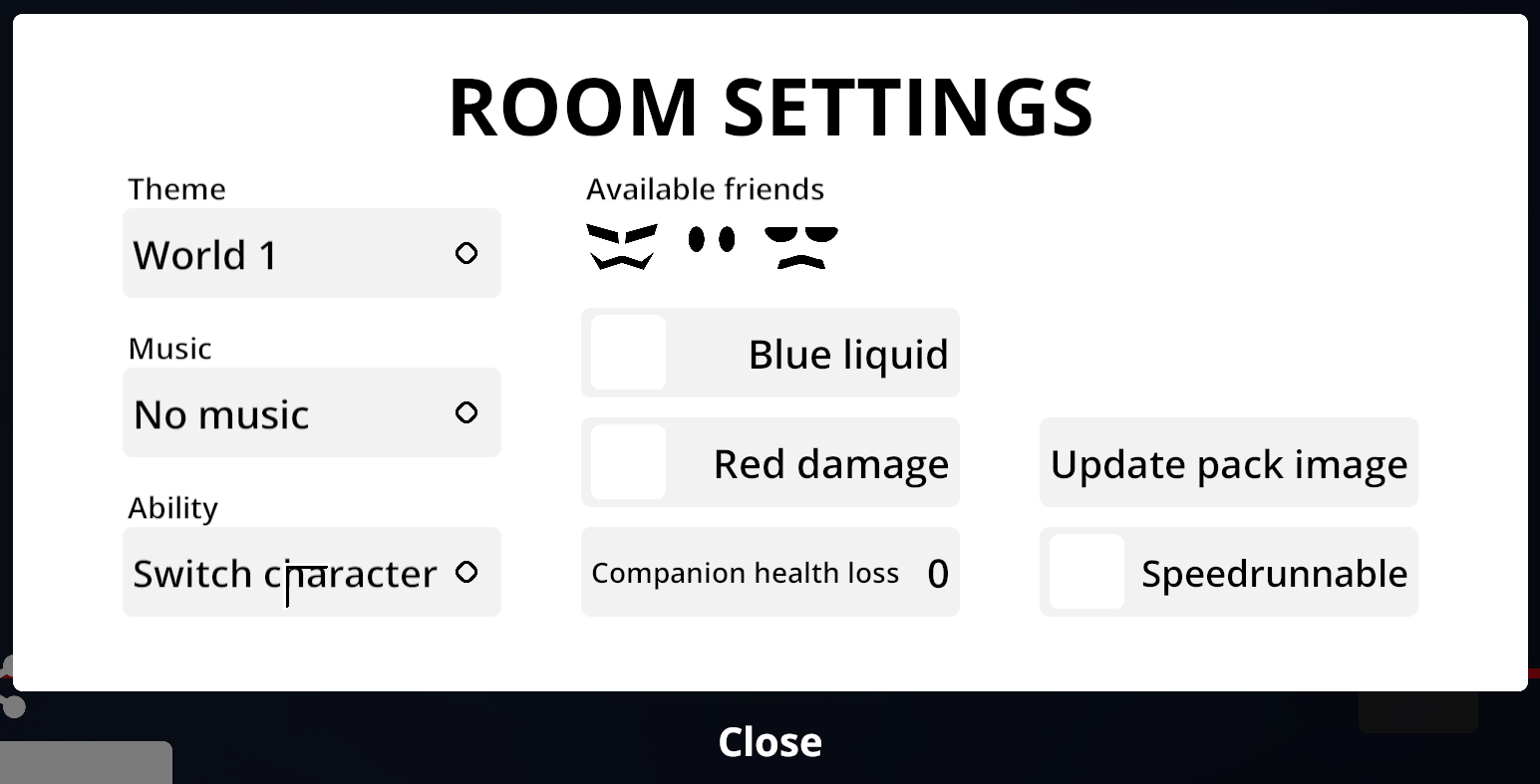
Vert
Perhaps unsurprisingly, Vert’s ability is the hardest to implement in the editor. D'abord, place the item that you want to make Green able to control. Dans ce cas, je’ll use some spikes.
Select the item (press and hold on mobile or press E on PC). Ici, toi’ll want to toggle the item as « Active. » This switch makes it so you can customize the item and make it dynamic. Pointes, big spikes, plates-formes, and spinners all have this option.
After setting the item as « Actif, » you should see more options appear. You can experiment with these, but for our case we’ll need to activate « Needs Green. » This will make the spikes appear when you turn into liquid as Green.
If you press play immediately, toi’ll see that this works opposite how we want it to – we want the spikes to disappear when we use Green’sa capacité! Dans ce cas, nous’ll need to also enable « Inverted. » This means that instead of the Spikes appearing while using Green, ils’ll disappear.
Now it works excellently!

Rouge
For Red, all we’ll need is one of his red dots. Ils’re found on the fourth row of the Dock.
Now simply place the dot in the room, et toi’je suis prêt à partir!
(I created another platform of ground separate from the default one by clicking the triangle on the first row of the Dock)

Bleu
Dernièrement, Bleu’s ability is to stop time, and we can make this happen using the « Turbo » setting on items. Many items have this option, but to make it simple, nous’ll use either the Z Block or the Falling Block. Both of them are found on the second row.
Select the item you chose, et activer « Turbo. »
Try out your room! You should need all 3 cats in order to make it through!
Compagnon & Boutons
Nous’re not done with this room quite yet! Nous’ve implemented so many features into our pack, but our final one will be the hardest one yet. Enfiler’ne t'inquiète pas – si tu’ve gotten this far, toi’ll be able to do this just fine.
In World 8 of the base game Lumi meets the Companion (cube? carré?). This being is the only character that we know for sure is not a cat. Nous’ll use the Companion for the last part of our room.
D'abord, I created a new Power Ring and a Checkpoint afterward.
The Companion is usually used with Hidden Platforms. These act just like ground, but can be toggled on and off with buttons. Ils’re found on the fifth row of the Dock. This is also where you can find the buttons.
I created a Hidden Platform right next to our real platform. Si c'est’est caché, assurez-vous que’s not hidden by selecting it and unclicking the « Caché » option.
Après, toi’ll want to go into the third row of the Dock and find the lava – just like the ground object, il’s a triangle, but is completely orange.
I made and shaped the lava into a position that lined up with the Hidden Platform. I also added a door beneath the Hidden Platform, and another ground object under the Door. Make sure that the player cannot reach the Door unless the Platform is hidden.
Add a button to the end of the lava so that only the Companion will be able to click it. Select the button and set its direction to the right. This means that the Companion will have to run into it from the left to click it.
Essayez-le!
…Euh oh. The button isn’je ne travaille pas.
Bien, we still have to connect the button to the Hidden Platform.
Select the button, et cliquez « Connect to ___. » Immédiatement après, click the Hidden Platform. Il’c'est aussi simple que ça – the button is now connected to the platform.
The button will now have a new menu – in this submenu you can control the settings of the Hidden Platform through the button. Anything you change here will change in the Hidden Platform when the button is pressed. Since we want the Hidden Platform to become hidden when the button is pressed, all we have to do is enable the « Caché » property on the button.
If you did everything right, the Companion will now click the button successfully, and Lumi will fall below the Platform, where the player can lead her to the door.
Other Important Things
Our pack is done, but I felt like I should mention a few other important items in the editor before we finish this guide.
Hexagons
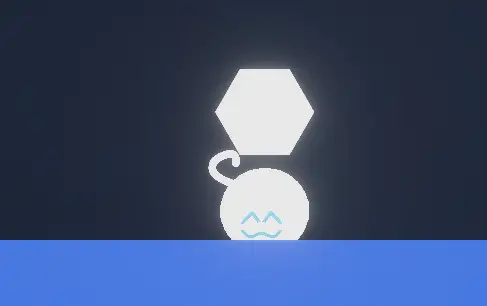
If you remember World 5, the player is able to carry and insert Hexagons into receivers. Hexagons and all Hexagon-related items are on the fifth row of the Dock.
Si tu’ve never worked with Hexagons, you may not how they operate.
Ici’c'est comme ça que ça marche:
- Lumi can carry one Hexagon at a time
- Each Hexagon contains an item
- When the Hexagon is close enough to a Hexagon Receiver, it merges with the Receiver, and the item spawns
This means that instead of putting the item we want to spawn in the Receiver, we need to put it in the Hexagon itself. Just like the Door situation, this may be more complex at first, but opens up a lot more possibilities for packs.
Remember to go into room settings (via the cog button on the right sidebar) and set the ability to « Ramasser » in order for Lumi to be able to pick up the Hexagons!
If you want to spawn a Door with a Hexagon, drag a Door onto the Hexagon.
Make sure that your finger or your cursor is touching the Hexagon when you let go!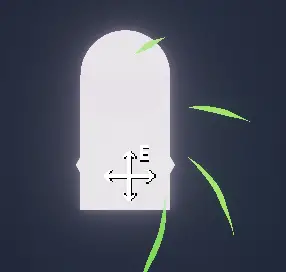
If you select a Hexagon, toi’ll be able to edit the properties of the item inside.
Hexagon Receivers are right next to the Hexagons on the Dock. Add one in, and watch the magic happen!
Tracks are very useful in the editor, for transporting items, presenting new problems or situations, or just as pack decoration. Just Another Pack made using tracks for decoration popular, beginning a bit of a decoration revolution within packs.
Pistes’ main purpose are to move items along the track. Items can either move backwards after reaching the end of the track, or teleport back to the beginning. This can be changed in the options menu of the tracks.
To add an item to a track, simply drag and drop the item onto the track. Just like with Hexagons, make sure that your finger or cursor is touching the track when you let go!
The speed and direction of the track are alterable as well.
If tracks seemed useful, then orbits are on another level. The crazy tricks people have used orbits for is insane. Par exemple, remember that one spinning room in A Light in the Shadows? It was able to be recreated in the editor using orbits! Check out the Academy of Gimmicks pack to see a lot of these orbit tricks.
At their core, orbits spin an object around them. Because of their flexibility and range, and the fact that you can attach multiple items to orbits, including more orbits, and can attach orbits to tracks, these can become very useful.
Just like tracks, drag and drop an object onto the orbit to attach it.
Toi’ve now got a spinning item!
Releasing your Pack
The time has come to finally release our pack! To end the pack, select the Door in your final room, and toggle « End pack. »
To export the pack, nous’ll need to do a full playtest from beginning to end. Click the Share button on the bottom left to begin this playtest.
Quand tu’re done with the playtest, the pack will export!
- Si tu’re on mobile, click the button to share your pack. De là, I recommend to download the file, instead of immediately sending it to a text message or Discord channel. De cette façon, you can work on the pack’s description before uploading it.
- Si tu’re sur PC, click the button to open your file browser. In the window that opens, find your pack. Here you can copy and paste it to any folder you want, or upload it to a messaging or Discord channel.
…Now where do I put it
Félicitations! You just finished your first Cats are Liquid Worldpack, et moi’je suis sûr que tu’ll go on to create many more.
C'est tout ce que nous partageons aujourd'hui pour cela Cats are Liquid - A Better Place guide. Ce guide a été initialement créé et rédigé par SuperPhantomUser. Si nous ne parvenons pas à mettre à jour ce guide, vous pouvez trouver la dernière mise à jour en suivant ceci lien.
